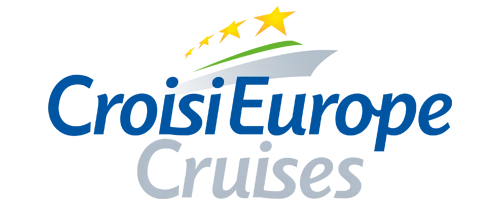- Home
Excursions to Greece
Excursions to Sicily, Greece and Cyprus
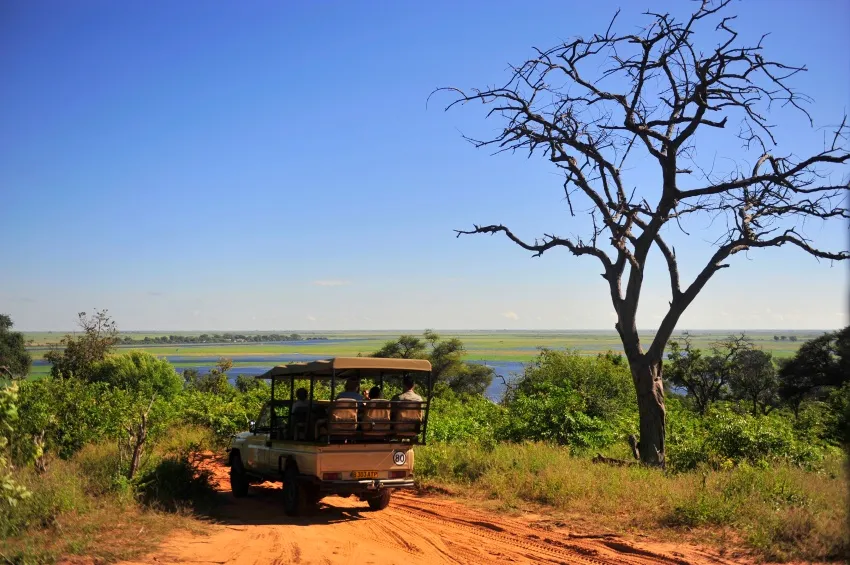
Join us for a full-day's adventure exploring Chobé National Park. We'll journey out on a safari in Jeeps through what is known as the most biologically diverse national park in Botswana. Stretching over 11,000 km² (4,500 sq mi), it is home to more than 250 different animal species and over 1/4 of the total elephant population in Africa. Enjoy lunch in our "floating restaurant" in the middle of the river where the views of the surrounding nature and wildlife are unparalleled. Afterwards, we’ll board small private boats for a water safari on Chobé River all the way to Sedudu Island and its marshes. For several months each year, the island is submerged by floods, making it an ideal location to witness touching scenes of wildlife at the very heart of the Chobe National Park.
PLEASE NOTE
- Times are approximate and the order of the visits can change.

Impalila Island is a small Namibian island on the Caprivi Strip protruding into the northern territory of Botswana, Southern territory of Zambia and Western territory of Zimbabwe and surrounded by the Chobe River. Our walk will be guided by locals who were born and raised on this very island. They will lead you to a village whose inhabitants will give you a first-hand account of their daily lives, jobs and how the different villages of the island come together. You will also get a chance to visit a school and the surrounding bush (provided conditions are met - unavailable during weekends and school vacations). This school is where your guides have studied themselves, and is still very much active with over 400 pupils who will be glad to share moments of exchange with us along with their teachers. Guests are welcome to support the students by bringing supplies such as pens and notebooks.
PLEASE NOTE
- Times are approximate and the order of the visits can change.

We’ll journey out on a safari to discover the area around Matusadona National Park. Bordered by the Sanyati and Ume Rivers, this 1,400km²/540 sq mi-large untouched area is home to numerous animal species such as elephants, hippos, crocodiles, buffalos as well as thousands of birds. We might be lucky enough to cross paths with a big cat or two! The history of the park is closely linked with that of the lake: during the construction of the dam, the rising floodwaters affected the native wildlife although the damage was mitigated by Operation Noah, an initiative which saved the lives of over 6,000 animals. This rescue operation allowed for large mammals, big cats, impalas and more to be moved to Matusadona where hunting is strictly prohibited.
PLEASE NOTE
- Times are approximate and the order of the visits can change.
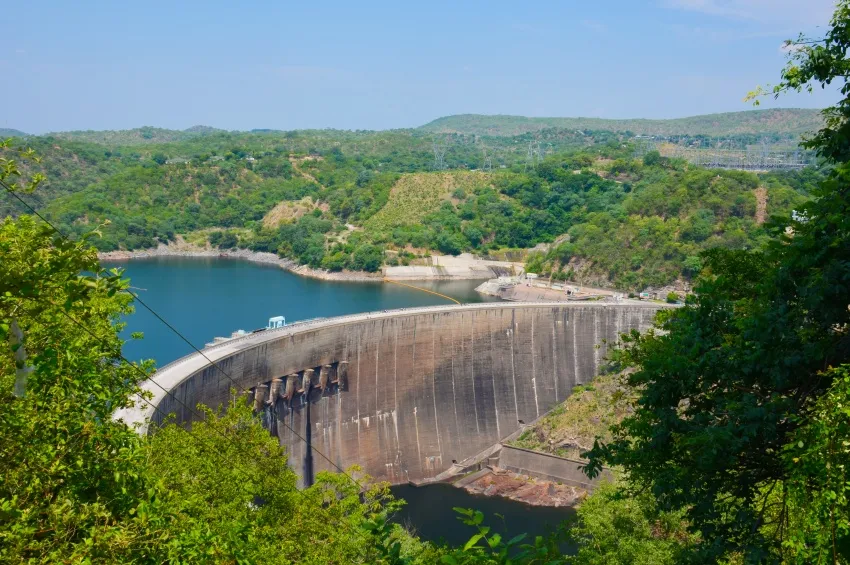
We’ll set out to discover the gigantic Kariba Dam which was created in 1955 to form Lake Kariba. Today, the dam serves as a source of electric power for 70% of Zimbabwe. You’ll get to discover the story and legends surrounding the creation of the lake, including the tale of NyamiNyami, the river god. Reaching over 140mi/200km in length and spanning a distance of approximately 25mi/40km at its widest point, the lake flooded flatlands, hills and forests alike, creating unique and emblematic landscapes where drowned trees reach skywards from the depths of the reflecting water.
PLEASE NOTE
- Times are approximate and the order of the visits can change.
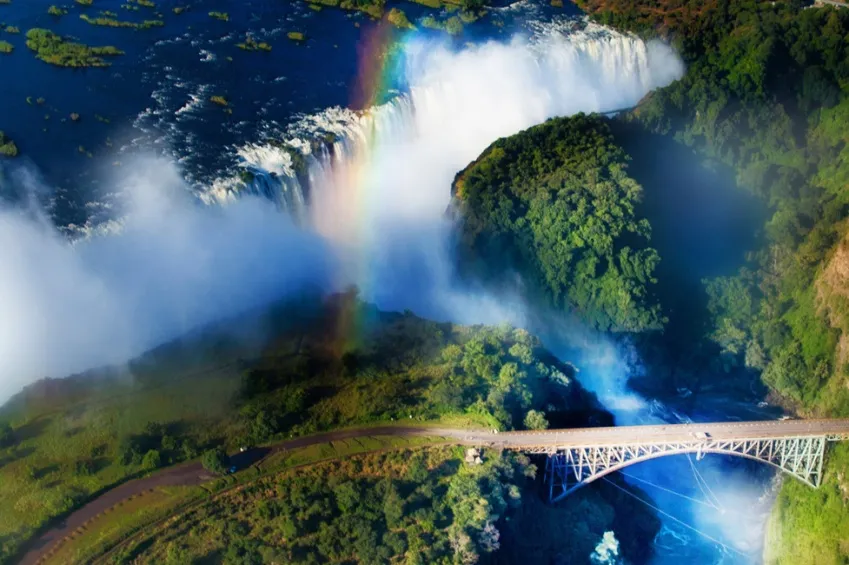
Victoria Falls were discovered by David Livingstone in 1855 and named in honor of Queen Victoria of Britain, but the indigenous Tonga name--"The Smoke That Thunders"--continues in common usage and suits the falls well: we’ll leave for a guided tour on foot along a path from where the views are among the most exceptional in the world, namely where the Zambezi River plunges over the cliff to become the widest waterfall in the world. The changing viewpoints and the grandeur of this natural spectacle will unfold as we walk along.
PLEASE NOTE
- Times are approximate and the order of the visits can change.
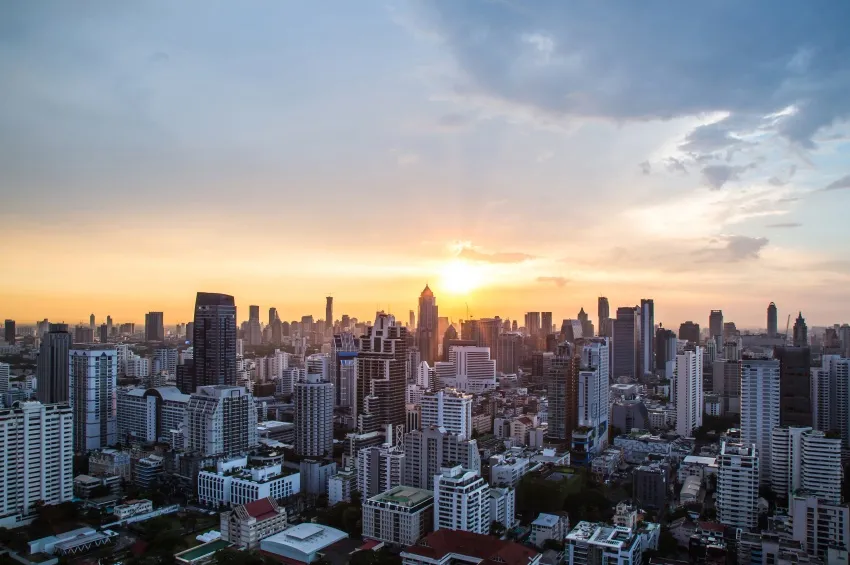
We’ll visit the Apartheid Museum which opened in 2001. It is famous the world over for being the first museum centering on South African history in the 20th century, and more particularly on Apartheid. Afterwards, we’ll set off for a panoramic tour of the city. In addition to being South Africa’s financial capital, Johannesburg is also the city of superlatives. It is indeed the richest town in Africa, with the tallest buildings and widest social discrepancies, but is also infused with one of the best atmospheres you’ll ever come across.
PLEASE NOTE
- Times are approximate and the order of the visits can change.
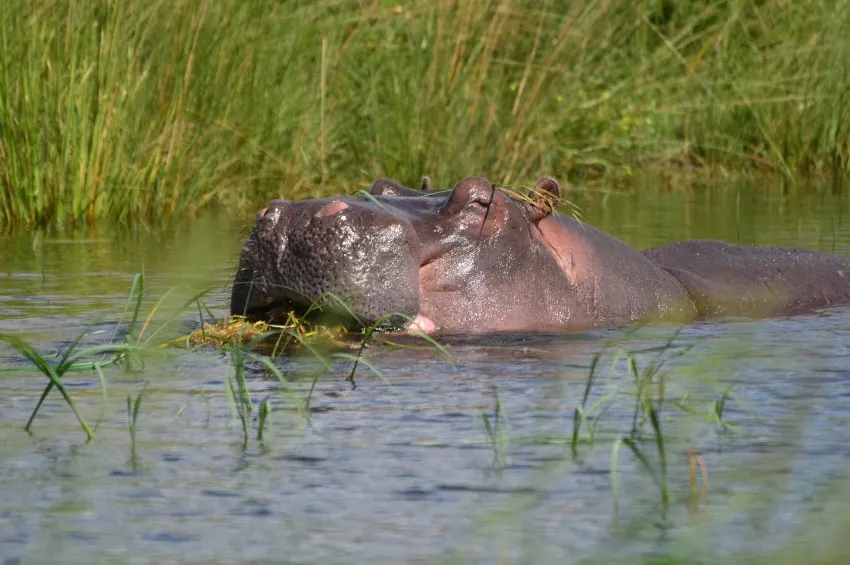
The Zambezi is a legendary 2,574-km-long river which rises in Zambia and flows through Angola, Namibia, Zimbabwe and Mozambique where it crosses the country to empty into the Indian Ocean. We'll board small private boats for our safari along the banks of the Zambezi that surround your lodge. Albeit wide and powerful, this river is home to a vast semi-aquatic wildlife such as hippos and crocodiles.
PLEASE NOTE
- Times are approximate and the order of the visits can change.
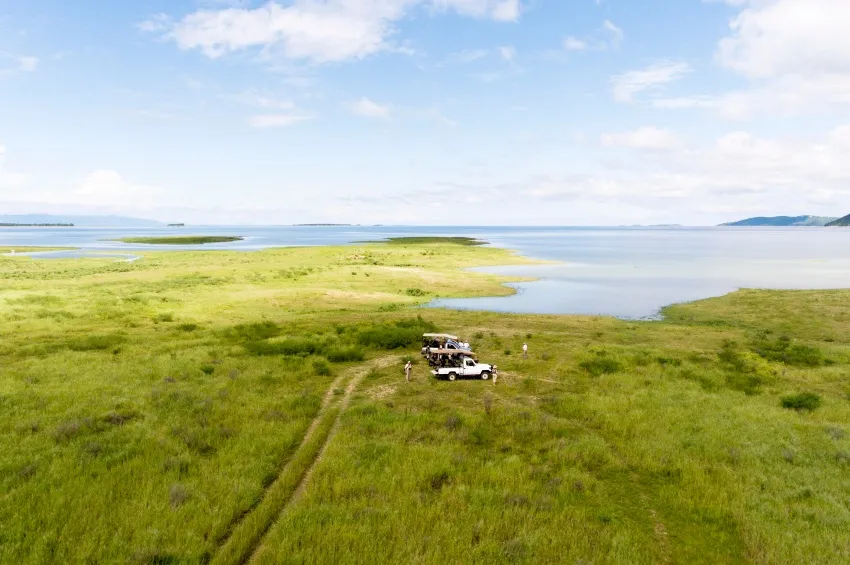
We've specially booked small private planes to access Lake Kariba, Zimbabwe where you'll be boarding the ship. Each flight lasts for about 1 hour and 40 minutes and is a true opportunity to admire stunning panoramas over the lake and its numerous islets as well as the changing landscapes of the wilderness from above.
PLEASE NOTE
- Times are approximate and the order of the visits can change.
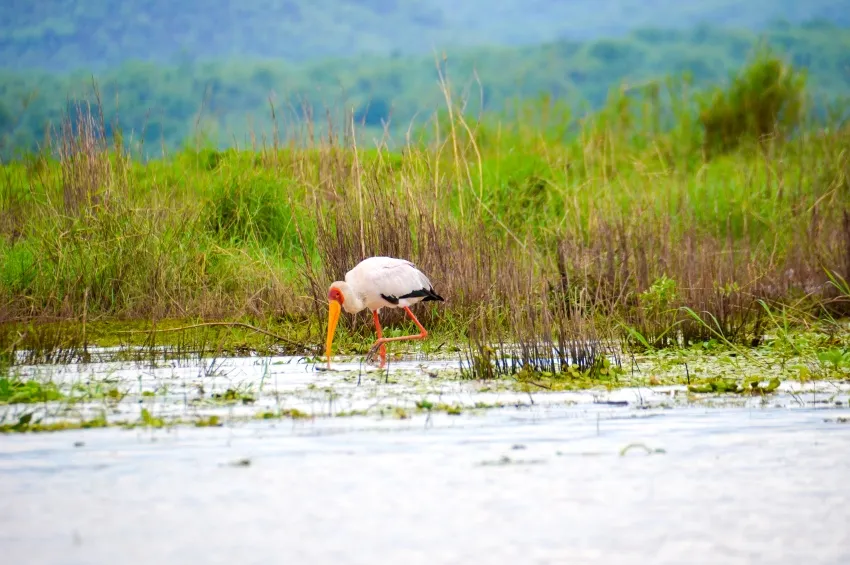
We’ll set out on a small private boat to discover the small waterways going into the Matusadona National Park and their unique wildlife. Gliding along their meanders, large bends and small, unspoiled inlets, you’ll be amazed by the magical atmosphere all around.
PLEASE NOTE
- The order of the visits can change.
- Times are approximate.
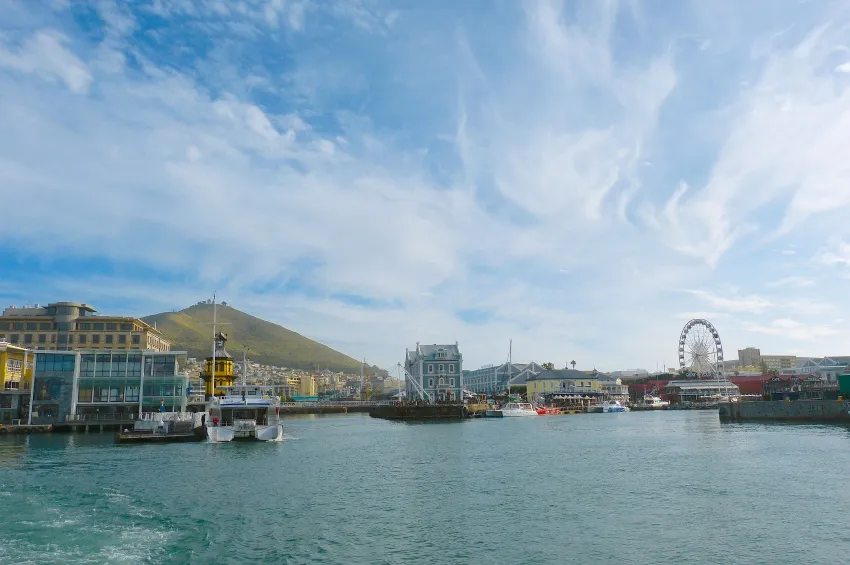
We'll leave for our visit of a South African National Heritage Site as well as a UNESCO World Heritage Site: Robben Island. Used for the isolation of political prisoners during Apartheid, this infamous island was where three former inmates served time before becoming President of South Africa, including Nelson Mandela. The prison closed in 1996. We'll have a guided tour of the island and its cells given by one of its former prisoners before returning to Cape Town for lunch on the waterfront.
Afterwards, we’ll visit the Groot Constantia wine estate, the oldest in South Africa. In 1685, the grounds of the estate were granted to Simon ven der Stel, the Governor of the Cape of Good Hope. The estate became famous in the 19th century for its expensive dessert wine which was sold to many enthusiasts throughout Europe, including Charles Baudelaire. Legend has it that Napoleon even used to order 30 bottles a month during his exile on Saint Helena island! We’ll visit the cellar followed by a tasting.
PLEASE NOTE
- Times are approximate and the order of the visits can change.
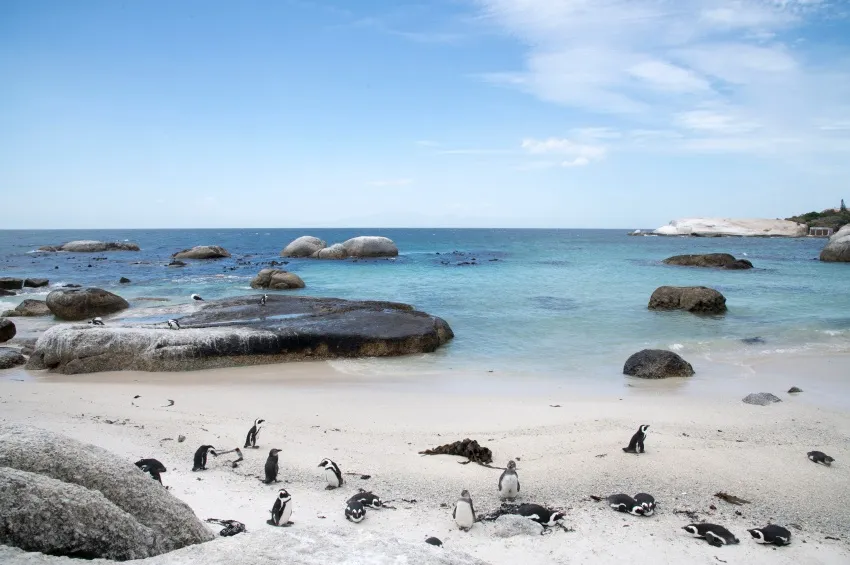
We’ll set out for the legendary Cape of Good Hope riding along Chapman’s Peak Drive, a panoramic road located on the Atlantic coast of the southwestern tip of South Africa. Listed as a national monument, this is one of the most spectacular routes of the country. The Cape of Good Hope was discovered by Portuguese explorers in 1488 and became a nature reserve in 1938 due to its extraordinarily diverse and unique fauna and flora. We'll take the famous Flying Dutchman funicular to the summit to relish panoramic views of the beautiful valleys, bays and beaches dotted all over this narrow stretch of land. After lunch, we'll set out to discover the penguin colony near Simon's Town: settled on the soft white sand between the large granite boulders or going for a dip in the turquoise blue seas, these little crowd-pleasers will surely catch your attention!
PLEASE NOTE
- Times are approximate and the order of the visits can change.
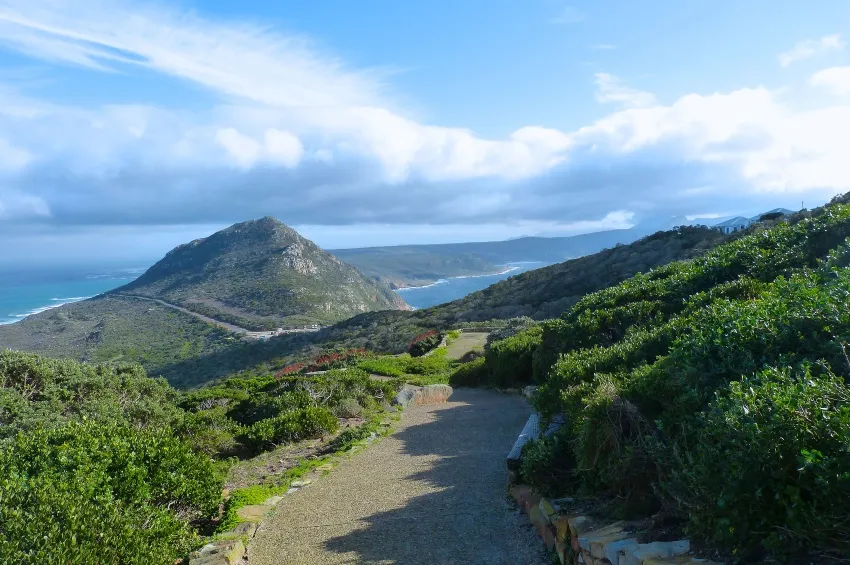
We’ll leave for a panoramic tour of the city. Cape Town is a meticulously preserved city with modern towers in the center, cobblestone roads and a bounty of historical monuments in Edwardian and Victorian architecture. We'll visit the Castle of Good Hope, the 1905 Cape Town City Hall and more before taking the Table Mountain Cableway to soak up the 360-degree views of Table Bay and the nearby peaks of the surrounding mountains (depending on suitable weather conditions).
PLEASE NOTE
- Times are approximate and the order of the visits can change.
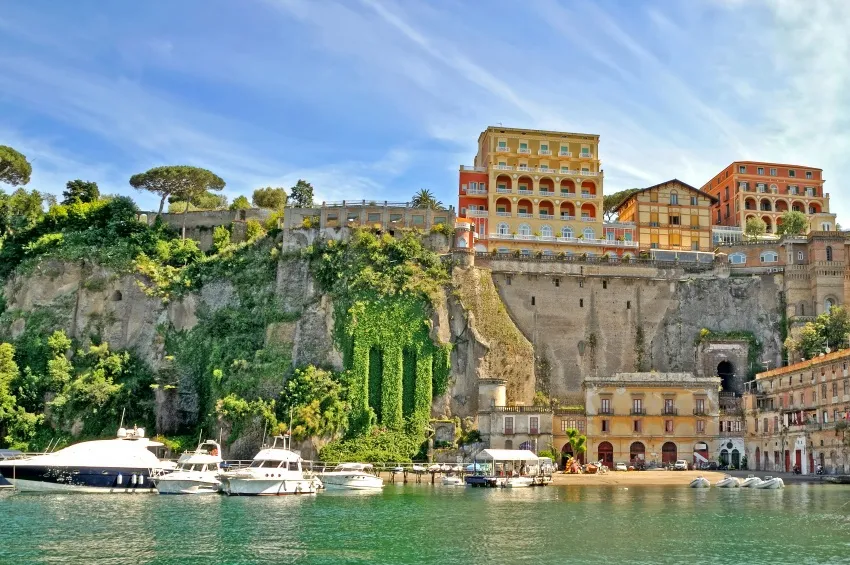
The Amalfi Coast is a captivating combination of great beauty and gripping drama: coastal mountains dotted with picturesque towns and lush forests plunge into the sea. UNESCO had the entire area declared a World Heritage Site in 1997 for its unarguable beauty and uniqueness of its natural landscape. There are all sorts of scenery on this coast from volcanoes to coves, valleys to mountains, fjords to cliffs, caverns to arches, and sandy beaches to rocky coasts. Writers, artists, heads of state, and actors often flock here for inspiration and tranquility.
We will stop in Sorrento and its extraordinary gardens and landscapes. We'll be able to admire the Sedile Dominova (exterior only), a picturesque open loggia with expansive arches originally constructed in the 16th century, the Church of Saint Francis of Assisi and its cloister (exterior only) and the Villa Comunale.
We'll enjoy a tasting of Limoncello. Before discovering one of the most charming tourist routes in the world along the Amalfi Coast.
Return on board in Salerno.
PLEASE NOTE
- The order of the visits can change.
- Times are approximate.
- Good walking shoes are recommended.

We'll leave by coach with our tour guide from Naples and enjoy the scenic 30-minute ride to Pompeii.
A reminder of the violent forces that lie deep inside Mount Vesuvius, Pompeii is Europe's most compelling archaeological site and one of Italy's most visited tourist attractions. Like an open book, the ruins provide fascinating information on the art, customs, trades and everyday life of the past. Alongside the elegant villas belonging to the nobility and the luxurious residences of the middle class stand modest houses where several families lived. The houses still contain furniture, kitchenware, lamps, food of all kinds, grain mills, grindstones, and workshops for making cloth.
Plaster casts of the volcano's victims are moving tributes to their last moments.
Enjoy some free time before returning to Naples.
PLEASE NOTE
- The order of the visits can change.
- Times are approximate.
- Good walking shoes are recommended.
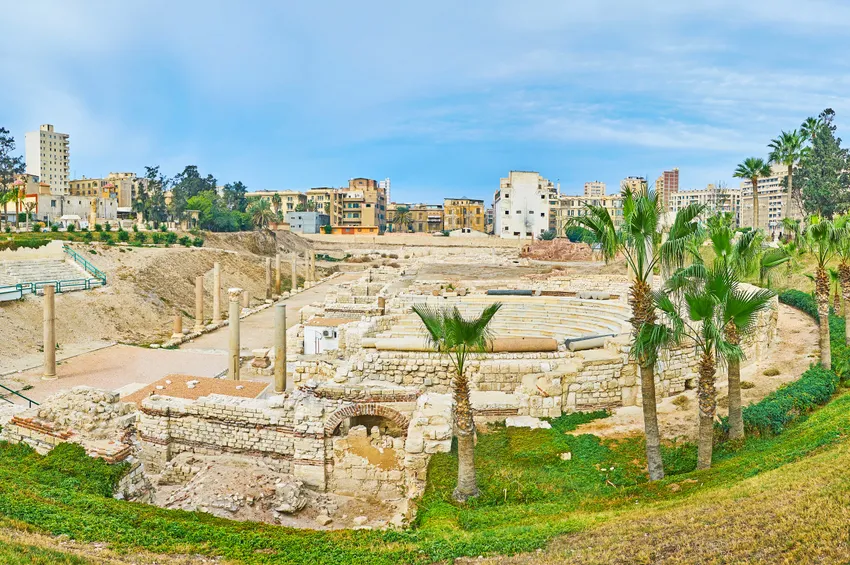
Alexandria, the largest port in Egypt and one of the Mediterranean’s leading seaside resorts, sits on the northwest bank of the Nile River delta. The city was founded by Alexander the Great in 332 BC. Today, it is a major seaport and industrial center. Its former standing as the largest and most prosperous city in the world, as well as its legendary library, have immortalized its name. During its golden age, Alexandria was home to scholars, scientists, philosophers, mathematicians, artists, and historians. We’ll visit the Alexandria National Museum, which contains 1,800 artifacts that recount the history of the city and the country. The priceless objects you’ll discover include the Tanagra figurines depicting real people in everyday apparel during the time of Cleopatra. We’ll then visit the theater in Kom el-Dekka, the only known Roman amphitheater in Egypt. The audience area consists of thirteen superbly preserved tiers of white marble. Initially discovered in 1967 during excavations to build an apartment complex, the site also contains the ruins of impressive villas and bathhouses.
PLEASE NOTE
- The order of the visits can change.
- Times are approximate.

To begin this excursion, we’ll set out by coach along the Midan Tahrir to see the Muhammed Ali Pasha monument, dedicated to the founder of modern Egypt. We’ll also pass by the Alexandria Naval Unknown Soldier Memorial in the Manshaya District before reaching the Montazah Palace Gardens with its magnificent palm trees, exotic plants, and beautiful flowers. King Fuad built Al-Haramlik Palace as a summer residence in 1932. The current government still uses the palace for official purposes. Another beautiful royal home, El-Salamlek Palace, sits across the gardens from Fuad’s palace. After our visit, we’ll head to the Bibliotheca Alexandrina. Inaugurated in 2002, the library sits on the same site as its historical namesake established in the 3rd century BC. The current library’s architecture is a striking feat built over eleven cascading levels.
PLEASE NOTE
- The order of the visits can change.
- Times are approximate.

Join us for an excursion to Cairo, “walking in the footsteps of the Pharaohs” (lunch included; approx. 10 hours total, incl. 4 hours round trip). The Giza pyramid complex is home to one of the Seven Wonders of the Ancient World: the “Great Pyramid of Giza” (137m) whose peak is still covered in the original white "casing stones” made of highly polished white limestone, its neighbors, the Pyramid of Khafra and the Pyramid of Menkaure (exterior views only). Not far from this jewel of symmetry, the Sphinx stands guard, arousing the admiration of passersby. Abou al-Hôl, literally the “Father of Terror” in Arabic, was called Sphinx by the Greeks because he resembled the mythical winged monster, who, according to legend, guarded the Greek city of Thebes, asking a riddle to travelers seeking entry into the city, and killing those who were unable to answer. It is thought to represent the Pharaoh Khafra. We’ll then continue on to visit the Museum of Egyptian Antiquities in Cairo, one of the highlights of the day—housing, among other things, the Treasure of Tutankhamun.
PLEASE NOTE
- The order of the visits can change.
- Times are approximate.
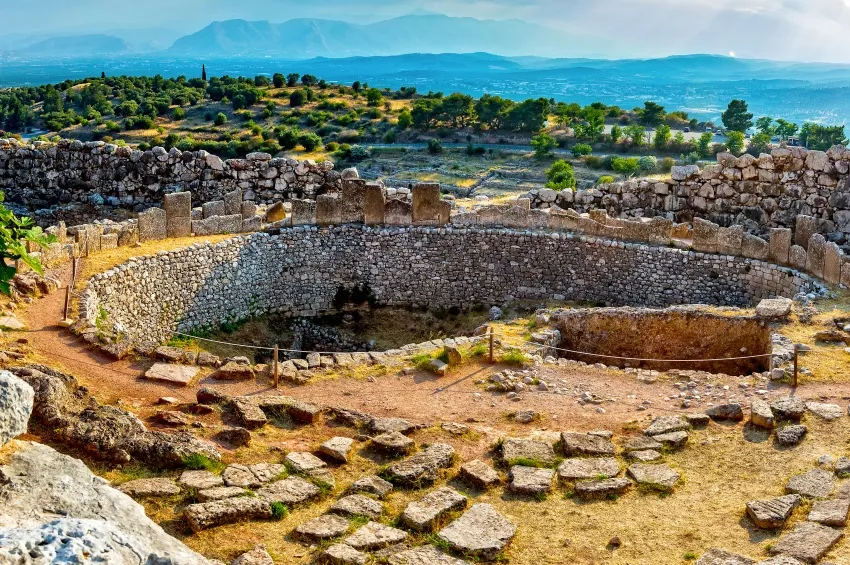
According to Greek mythology, Perseus founded Mycenae. He used Cyclopes to build the citadel walls so that no human could move them. The earliest mention of the city appears in Homer’s works. Join us for a tour of this fascinating center of Greek civilization and former military stronghold. Notable curiosities include the Lion Gate access way and the circular burial areas. The ruins are listed as a UNESCO World Heritage Site, as they played a vital role in the development of Classical Greece from the 15th to 12th centuries BC. The Mycenaean culture is the source of ancient epics and legends such as the labors of Hercules, the Trojan War, and Agamemnon’s tragic life and death. We’ll then continue on to Nafplio, founded by the son of Poseidon as recounted in Greek mythology. Have fun discovering this charming, romantic city dominated by the Palamidi Fortress high on the hill. We’ll also see the Bourtzi Castle, built by an Italian engineer in 1473, just off the coast of the city.
PLEASE NOTE
- The order of the visits can change.
- Times are approximate.

We’ll set out on a coach tour of the island of Mykonos. Our first stop will be the Monastery of Panagia Tourliani, the official protector of the island, in Ano Mera. Founded in 1542, it is a peaceful place that has a lot of history behind it. One belief is that it is named after an icon of the Virgin Mary found in a nearby village called Toulos. The site was completely restored in the 1770s, and its impressive architecture is framed by its whitewash exterior and colored dome. One of the most famous pieces in the church is the wooden altar screen crafted by Italian artists. After our time at the monastery, we’ll head to the city. Mykonos has a humble charm, although it is known as quite the place to party. The old town is dotted with churches and rustic chapels, with the Church of Panagia Paraportiani being the most famous. We’ll tour a few of the chapels, visit five of the iconic windmills (the city’s trademark), and spend time in the romantic Little Venice neighborhood. What a great way to get a feel for life on the Aegean Sea!
PLEASE NOTE
- The order of the visits can change.
- Times are approximate.
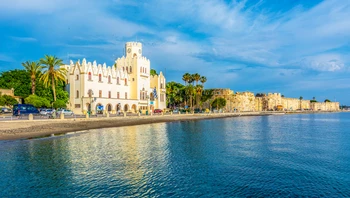
We'll tour the Asklepion, the ancient Greek version of med school. The three-terrace complex sits on a hill surrounded by Cyprus trees. In addition to being fascinating in itself, the Asklepion also has some breathtaking views. We'll visit the archaeological site, which contains the ruins of the old gymnasium and thermal baths from the ancient Greek era. Our tour will continue to Kos with a visit to the old part of the city. Sites we'll see include the agora—the ancient commercial and social center of the harbor and one of the largest to have been excavated to date. Nearby, we'll find the Tree of Hippocrates, where legend has it the Greek savant taught his students. Our last stop will be the medieval castle built by the Knights of the Order of Saint John.
PLEASE NOTE
- The order of the visits can change.
- Times are approximate.
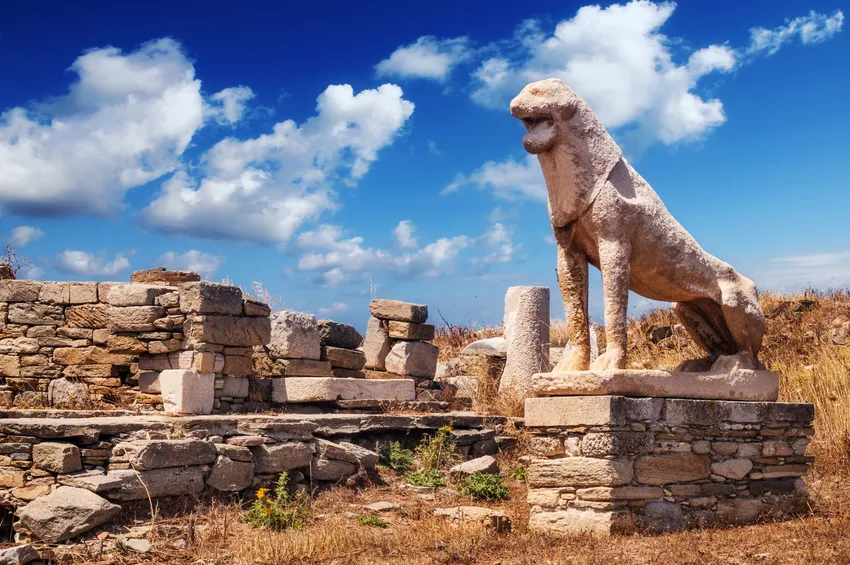
Greek mythology recounts the island of Delos as the birthplace of both Apollo and Artemis. Today, it is almost uninhabited and gives us a chance to walk among the ruins of what was once a thriving economic and religious center. According to its UNESCO listing, it was considered one of "the most sacred of all islands." Excavations began in 1872 and have unearthed a good part of the port, including the Apollonian Sanctuary. There is a museum as well that displays a collection of many of the smaller objects found at the site.
Please note that rowboats are used for this excursion.
PLEASE NOTE
- The order of the visits can change.
- Times are approximate.
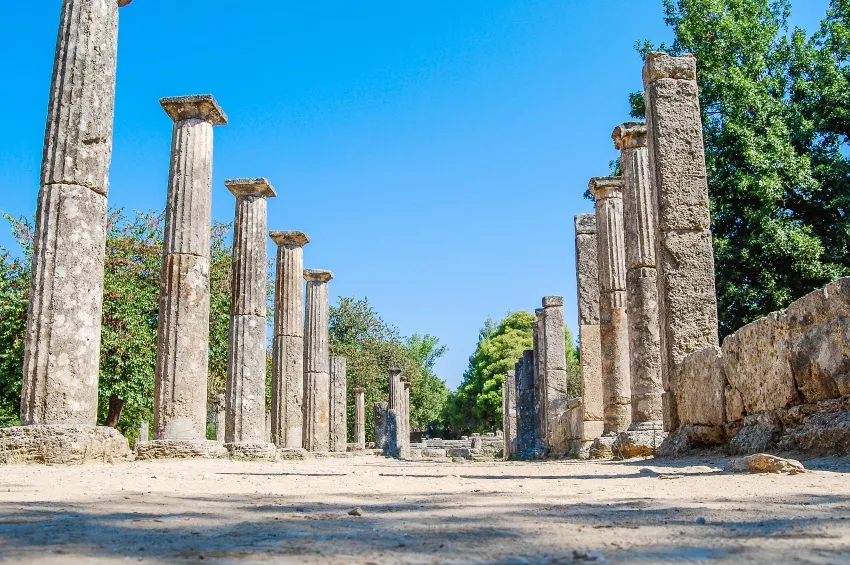
Departure by coach with your guides for Olympia, birthplace of the famous Olympic Games, whose watchwords were "physical and intellectual prowess, spirit of friendship and peace". First you will visit the Palestra. It was in the courtyard of this building that the wrestlers trained or bathed in the surrounding rooms. Then you will see the great Temple of Zeus, dating from the 5th century BC and partly destroyed by an earthquake in the 6th century. It contained one of the Seven Wonders of the Ancient World, the famous Statue of Zeus at Olympia sculpted by Phidias. You will also be able to admire the Temple of Hera, built in about 600 BC in Doric style. It is in front of this temple that the Olympic flame for the modern games is lit. The visit continues with the Stadium, where numerous athletic events took place: running, wrestling, pentathlon and more. You will notice that on the ground are still the start and finish marks for the races.
Duration : approx. 4:30
- Good walking shoes are recommended.
- The order of the visits can change.
- Times are approximate.
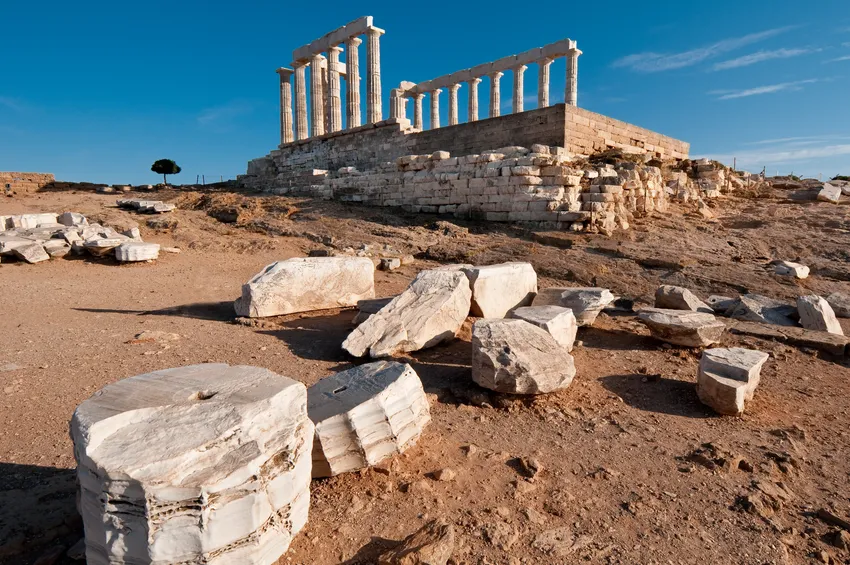
Cape Sounion and the coast of Attica are known for their beautiful countryside. Departure by coach from the port of Piraeus to reach Cape Sounion, south of Attica. You will then follow the coast of Apollo on the perimeter of the Saronic Gulf where you can enjoy the countinuous shimmering sea. At Sounion stands the ruins of the Poseidon's temple, overlooking the sea 60m at the end of a steep rock. This is very moving with it's breathtaking landscapes. Here the ancient Greeks worshiped Poseidon, the almighty god of the sea. Fifteen doric columns that have been preserved belong to the temple which was built during the golden age of Perikles.
The temple and the road that leads you there are worth to be seen.
PLEASE NOTE
- The order of the visits can change.
- Times are approximate.
- Good walking shoes are recommended.
- *Excessive drinking of alcohol is dangerous for health, consume with moderation.
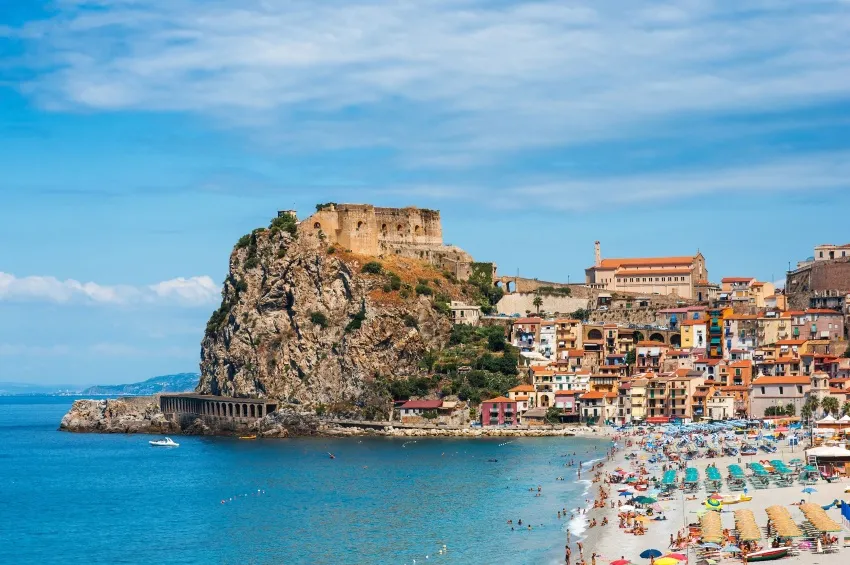
Discover Calabria - the "toe of the boot' on the extreme southern tip of Italy - lapped by the splendid crystal-clear Ionian and Tyrrhenian Seas. The Strait of Messina separates mainland Italy from Sicily.
Leaving from Vibo Marina, we'll begin our visit with Tropea, a seaside resort with impressive scenery. This stretch of coastline is known as Coast of the Gods. Already frequented during Roman times, it was the Normans, Angevins and Aragonese that made Tropea prosper. We'll see the marvelous cathedral and the Benedictine Sanctuary of Santa Maria dell'Isola. The sanctuary is on a rocky outcrop surrounded by the beach and sparkling sea and it's not hard to understand why it's one of the city's most photographed attractions. We'll enjoy a tasting of regional products.
PLEASE NOTE
- Wear comfortable, sturdy walking shoes.
- The order of the visits can change.
- Times are approximate.
- If the minimum of 25 participants is not reached, the excursion may be either cancelled or proposed at another rate, depending on the number of participants (to be paid for on board).
- These excursions are not proposed for all the cruises and depend on the itinerary.
- The excursions on the first evening and the morning following boarding are only guaranteed for the passengers who have booked the excursion before the cruise.
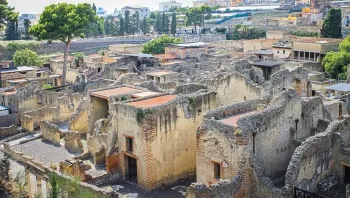
Herculaneum's fate runs parallel to Pompeii. Destroyed by an earthquake in 62 AD, the subsequent eruption of Mount Vesuvius in 79 AD saw it submerged in a sea of mud that essentially fossilized the city. Uncovered in 1709, it is now listed as a UNESCO World Heritage Site.
We'll leave by coach to visit the ruins and get a good idea of how ancient Romans lived. The excellent state of preservation is due to the rapid invasion of the lava flow, which prevented the buildings from collapsing. This meant that even delicate items, such as furniture and clothing, were discovered remarkably well preserved. Mosaics carved and painted frescoes, marble fountains and sinks, exquisite tile floors, and beautifully carved statues can be found throughout the city. Enjoy some free time on your own before returning to the ship in Naples.
PLEASE NOTE
- Wear comfortable, sturdy walking shoes.
- The order of the visits can change.
- Times are approximate.
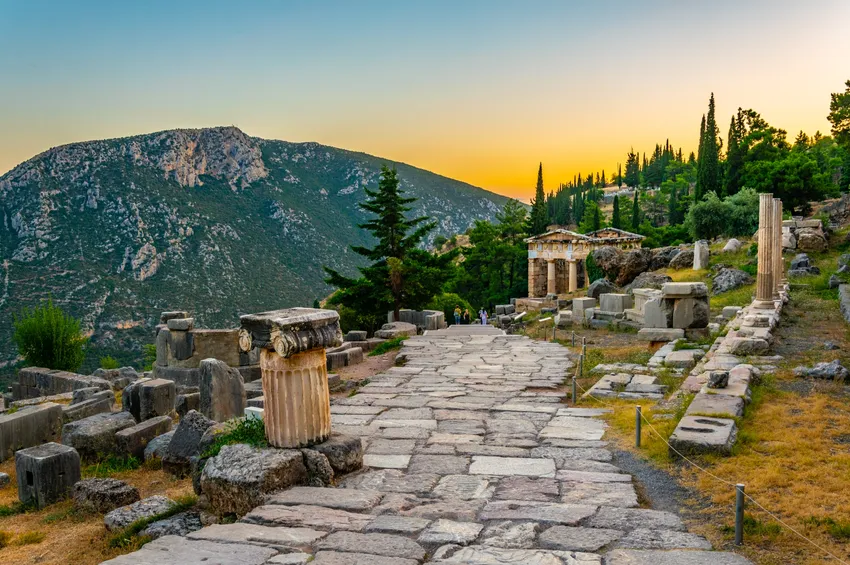
In ancient Greece, Delphi was considered the center of the world. The site’s sanctuary was the symbol of unity for many centuries. For two hundred years, the Delphic oracle, coming directly from Apollo, was regarded as the most trustworthy in predicting the future. It was delivered by a priestess known as the Pythia and interpreted by the priests of Apollo. Our visit to Delphi will bring us to the Sanctuary of Apollo, whose Sacred Way climbs to the 4th-century BC temple. On the way to the temple, we’ll pass by the Roman Agora, a marketplace that provided visitors a place to shop before ascending the way. The site also contains a Greek amphitheater, built into the natural slope of the hill, which offers spectacular views of the valley and was the scene of many musical and dramatic performances during Dephi’s various festivals.
PLEASE NOTE
- The order of the visits can change.
- Times are approximate.
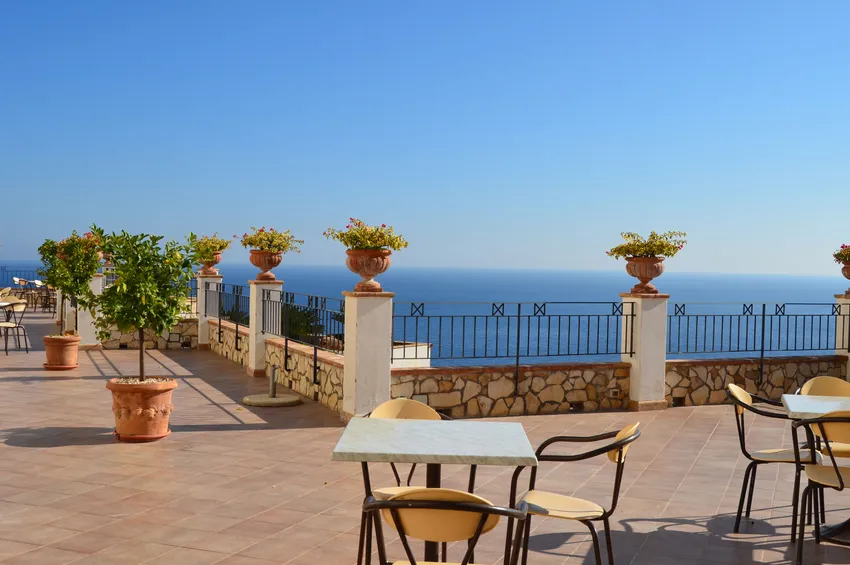
Discover the must-see sites, masterful works, and unexpected treasures in Naples, such as its old town. In the oldest section of Naples, enjoy a stroll down the Via San Gregorio Armeno, the famous pedestrian street where you can observe skilled craftsmen actually working on nativity figures as they carve and paint them. During the holidays, the atmosphere here becomes enchanted. We'll visit the Cloister of Santa Chiara to admire the nativity scene with 18th-century figurines.
PLEASE NOTE
- The order of the visits can change.
- Times are approximate.
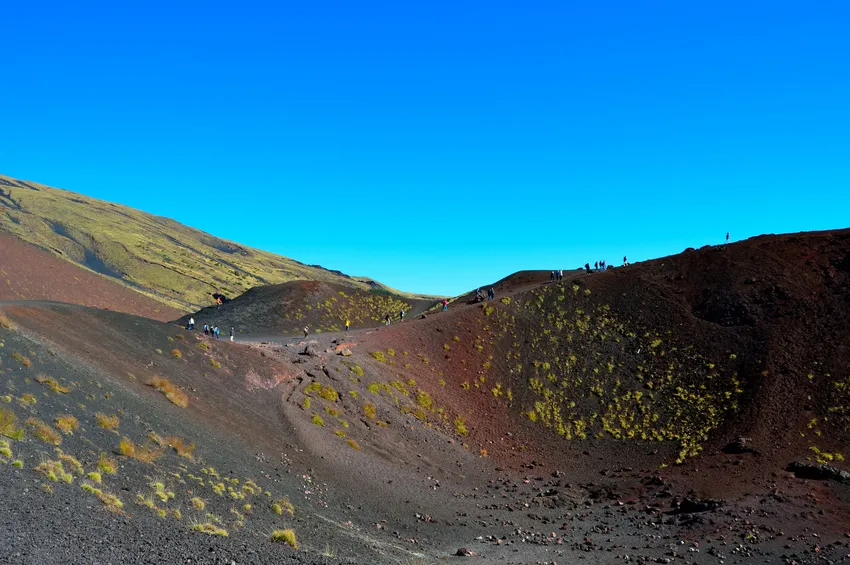
We’ll leave from the port of Catania for Mount Etna, one of Europe’s most famous volcanoes. Century after century, the eruptions have modified the slopes of the mountain, forming unique sculptures of lava and ice. Our coach will climb the mountain to the Sapienza refuge, at about 6,234 feet high (1,900 m). From there, we’ll continue our ascent by aerial tram and then in a four-wheel-drive bus to the “Tower of the Philosopher” at about 9,580 feet (2,920 m) in altitude. From the crater area and the ancient, monumental “Valle de Bove” caldera, you’ll take in the superb view across the valley to the Mediterranean Sea. A mountain guide will escort you on a walk around the crater before returning to the refuge using the same means of transport as your arrival. We’ll have lunch on the slopes of the volcanic mountain during our trip. At the end of the day, you’ll return to the port.
PLEASE NOTE
- The order of the visits can change.
- Times are approximate.
- Check the weather beforehand and bring the appropriate clothes and a good, sturdy pair of walking shoes.
- This excursion will only take place if the weather conditions and current safety measures are optimal.
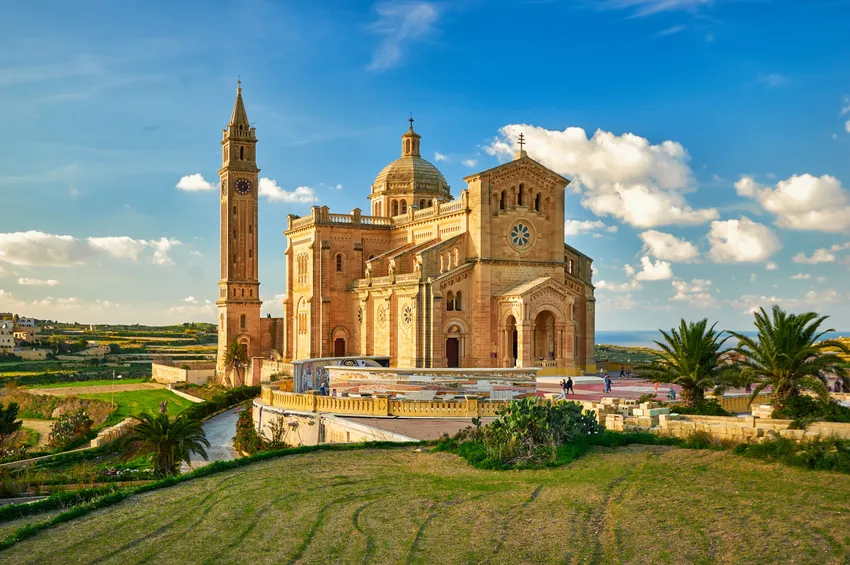
Leaving Valletta, we’ll head to Cirkewwa where we’ll catch a ferry for Gozo. Although it is part of Malta, this island is more rural and is known for its scenic hills. We’ll arrive in Mgarr Harbor and head towards Xaghra, home to the Ggantija megalithic temples. These two giant temples are the oldest of the temples of Malta, and date back to between 3600-2500 BCE, making them older than both Stonehenge and the pyramids of Egypt. We’ll then visit the laid-back city of Victoria—also known as Rabat to the locals—and its gorgeous cathedral (exteriors only) dominating the view on the hill. We’ll enjoy lunch during our excursion. After, we’ll discover remains of the Azure Window, a 92-foot (28 m) limestone natural arch that collapsed completely in March 2017, as well as the bay of Xlendi. We’ll return to the large island of Malta by ferry.
PLEASE NOTE
- The order of the visits can change.
- Times are approximate.

We’ll leave from Pozzalo Harbor for Regusa, where you’ll discover two cities in one: modern Regusa rebuilt after the 1693 earthquake and ancient Hybla Heraia. The city’s architectural gem is the Duomo of San Giorgio, a mid-18th-century cathedral with a magnificent neoclassical dome and stained-glass windows. The town’s public park, the Giardino Ibleo, is a great place to stroll. We’ll then head to Modica. Rebuilt after the 1693 earthquake, Modica is now a lively and dynamic city with over-sized churches and steep stairs running from the bottom of the village to the top of the slope. The city is built around a junction of steep valleys, with the oldest part of town, Modica Alta (“Upper Modica”) on a ridge and Modica Bassa (“Lower Modica”) along the valley floor. It is particularly famous for its chocolate, but that is not what certified it as one of the area’s UNESCO-listed baroque towns.
PLEASE NOTE
- The order of the visits can change.
- Times are approximate.
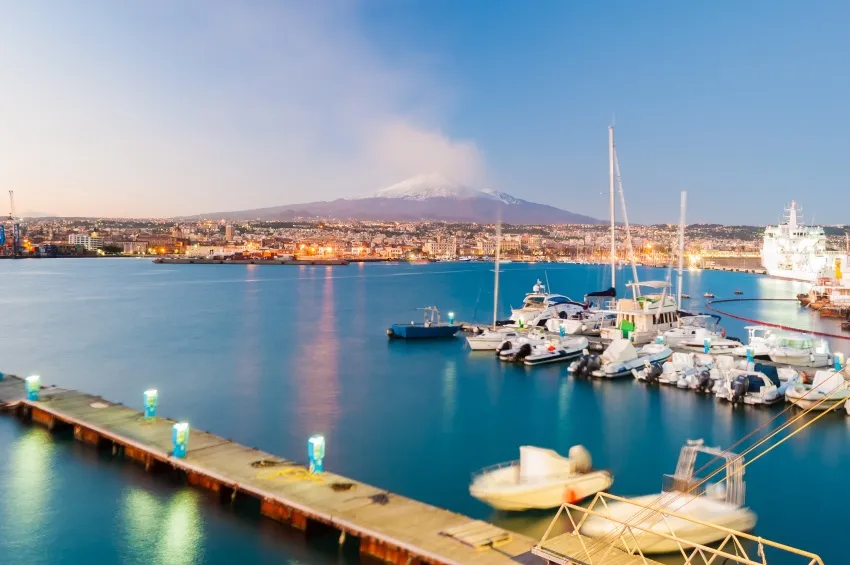
Located on the banks of the Ionian Sea and dominated by Mount Etna, you’ll discover vast squares, wide streets, and lava-rock buildings in the splendid city of Catania. Its historical and artistic heritage is just waiting to be discovered. As well as ruins from the ancient city, the town boasts a wealth of fine baroque architecture. We’ll visit the city on foot to discover its abundant treasures: the Roman theater and Odeon, wonderfully typical piazzas, and the many baroque churches and palazzi. We’ll have a visit to the cathedral, which has been destroyed several times by eruptions and earthquakes. Its current design dates back to the 16th century. After, you’ll have some free time before we return to the port.
PLEASE NOTE
- The order of the visits can change.
- Times are approximate.

Leaving from Valletta, join us for an excursion to Mdina, the ancient capital of Malta found in the center of the island. The narrow, winding streets date back to medieval times and bring us up to the imposing bastions that provide a magnificent panoramic view of the island. During our tour, you’ll discover the various architectural styles, including Byzantine and baroque. According to legend, the Apostle St. Paul is said to have lived here after being shipwrecked on the islands. We’ll then head to the charming city of Rabat to visit the Catacombs of St. Paul, a fascinating labyrinth of subterranean tombs holding the earliest evidence of Christianity in Malta.
PLEASE NOTE
- The order of the visits can change.
- Times are approximate.
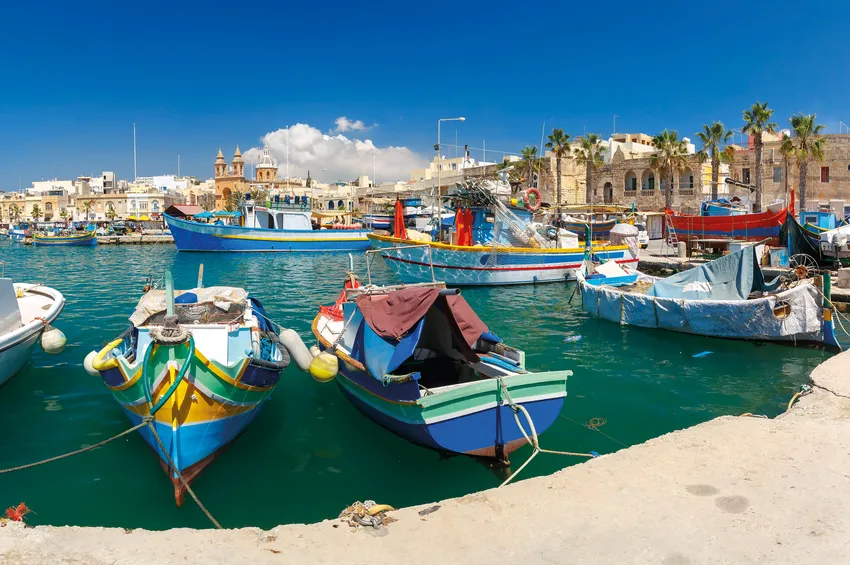
We’ll leave on foot for a guided tour of the capital city of Malta. The city was built stone-by-stone by and for the Order of Knights of the Hospital of Saint John of Jerusalem. We’ll join the Upper Barrakka Gardens using the famously unique and convenient lift found at the waterfront. From there, you’ll be able to take in the breathtaking panoramic view across the waters and cityscape. As we walk along the lively city streets, we’ll visit some of the main sites, including Saint John's Co-Cathedral, which still houses Caravaggio’s masterpiece work The Beheading of Saint John the Baptist—the only piece of art he ever signed.
PLEASE NOTE
- The order of the visits can change.
- Times are approximate.

The trulli are known throughout the world for their singular beauty. The easily dismantled dwellings were invented at a time when the inhabitants needed an ingenious way to avoid taxation. Enjoy a stroll through the charming streets of its historic neighborhoods.
PLEASE NOTE
- The order of the visits can change.
- Times are approximate.

Totally destroyed by the 1693 Sicilian earthquake, the current town of Noto was built on the left bank of River Asinaro, about 8 miles from the previous town. We’ll enjoy a lovely stroll through the historic center taking in the characteristic architecture of the golden-yellow limestone buildings. On the right above the piazza Immacolata, we’ll come across the Church of Saint Francis Immaculate at the top of an impressive staircase. Opposite the splendid cathedral in town, there is the Palazzo Ducezio, which houses the Municipal Hall. We’ll visit the cathedral, whose facade incorporates baroque motifs and classical elements. Inside, the three aisles of the church are divided by tall pillars, and in the chapel at the end of the right aisle is the silver urn of San Corrado, the patron saint of the city.
PLEASE NOTE
- The order of the visits can change.
- Times are approximate.
Learn all about the fascinating past of this typical Mediterranean archipelago. First, we’ll head to Marsaxlokk, a traditional fishing village known for its brightly colored fishing boats called “luzzu”, and lively markets along the waterfront. Then, we’ll discover the Hagar Qim temple complex dating back to the beginning of the Bronze Age. The megalithic temples of Malta are among the most ancient religious sites on Earth and described by the World Heritage Sites committee as “unique architectural masterpieces”. We'll get to taste local products during our visit.
PLEASE NOTE
- The order of the visits can change.
- Times are approximate.

Parikia, the capital of Paros, is a gorgeous village full of small whitewashed houses and imposing mansions. The most famous site in Parikia is the church of Panayia Ekatontapyliani—the 6th-century church with 100 doors, including a secret one! We’ll then head to Lefkes, tucked into the island mountains. The village was the first capital of Paros and built on the hills to protect the original inhabitants from pirates. Our last stop will be Naoussa, a beautiful fishing village with a tiny harbor bursting with restaurants and cafés. After our excursions, we’ll return to our ship.
PLEASE NOTE
- The order of the visits can change.
- Times are approximate.
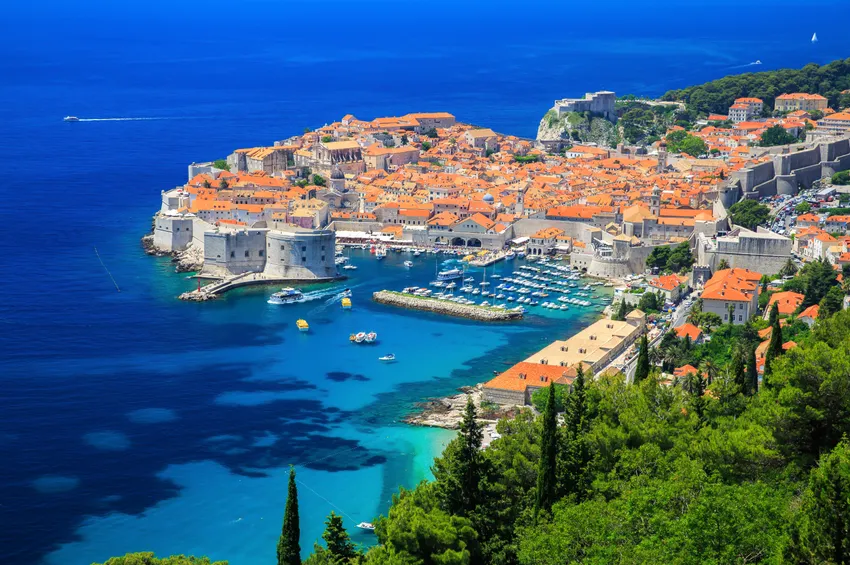
You’ll leave by coach to the starting point of your hike, which brings you to the hills over Dubrovnik. We’ll begin on an old rail line that dates back to Austro-Hungarian Empire, before meeting up with the 15th-century aqueduct. The aqueduct was a considerable feat for its time, as it brought water from over 7.3 miles away to the city. Our hike will be filled with glorious panoramas at every turn, including views of the Ombla River, Franjo Tudman Bridge, Elaphiti Islands, and the city below. You’ll descend on foot to the Nuncijata district.
PLEASE NOTE
- Please wear comfortable, sturdy walking shoes.
- Hike: Approx. 4.34 miles (7 km); moderate level.
- The order of the visits can change.
- Times are approximate.
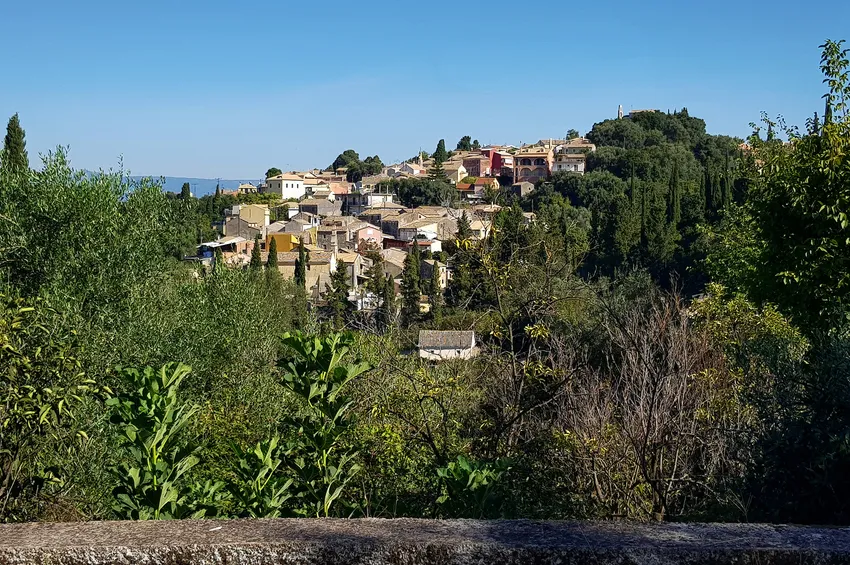
You’ll be transferred by coach to Achilleion Palace, where we’ll head up above Gastouri to Mount Agioi Dela and over to a vista at the Holy Church of Agia Kyriaki (945 feet in altitude). What makes this hike so special is the beautiful overlooks. The best one is at the chapel, where you’ll be able to see the islet of Pontikonisi, also known as “Mouse Island,” named after its shape. Among the lovely sights on this hike is a grand view of the city of Corfu.
PLEASE NOTE
- Please wear comfortable, sturdy walking shoes.
- Hike: Approx. 2h30 walk, 919-foot altitude difference (280 m), moderate level.
- The order of the visits can change.
- Times are approximate.
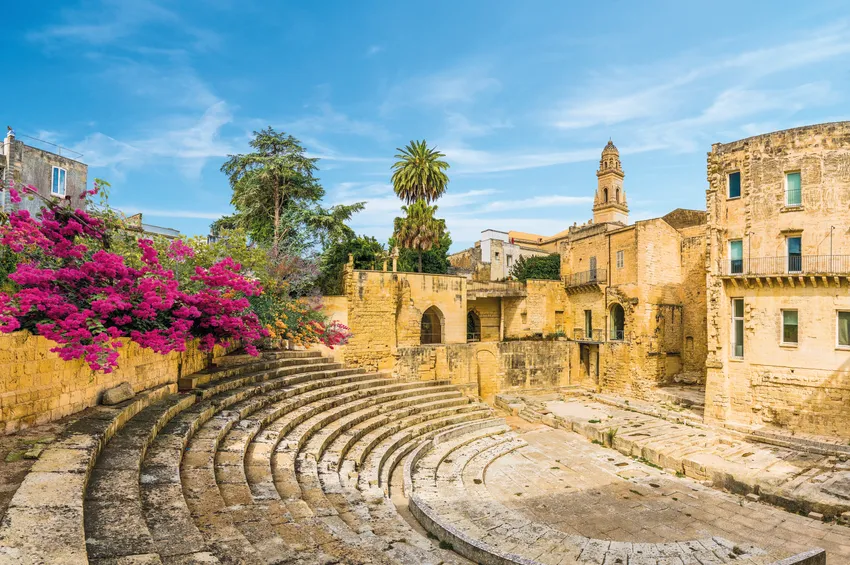
Lecce is, quite simply, a Baroque masterpiece. So much so that it has its own name: barocco leccese. Nicknamed “The Florence of the South,” the city is overflowing with rich, historical monuments. At each corner, you’ll find a palace or church built from the soft, workable limestone that is easy to sculpt. Among the many architectural splendors we’ll see from the outside are the buildings in the Piazza del Duomo—including the Duomo, Bishop’s Palace, and Seminary Palace—the Roman amphitheater excavated after World War II, and the Basilica di Santa Croce.
PLEASE NOTE
- The order of the visits can change.
- Times are approximate.

Etna is the highest volcano in Europe but also the most active in the world, with an altitude of 3,330 meters (10,925 ft high), it erupted almost a hundred times during the 20th century. We’ll follow a scenic road along the mountains and cross the villages of Giarre, Santa Venerina and Zafferana. When we reach 1,950 meters (7,000 ft), we'll take a walk towards the "Silvestri” craters and enjoy the desert moon atmosphere. From there, we'll enjoy a wonderful view over the gulf of Catania.
PLEASE NOTE
- The order of the visits can change.
- Times are approximate.
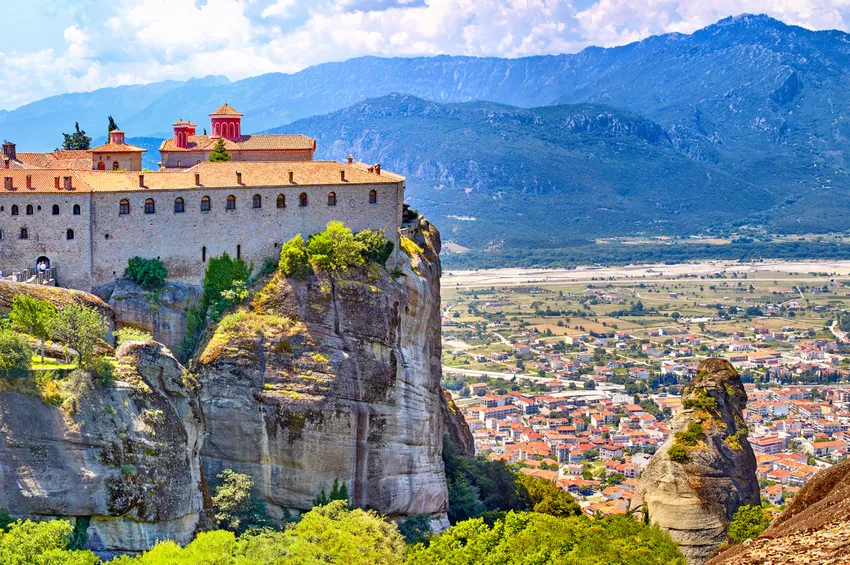
Discover one of the most spectacular sites in Greece. Although the original town of Kalambaka was destroyed during World War II, the Meteora monasteries remained intact on the summit of the rocks. The caves in the rocks were inhabited by hermit monks in the 9th century AD. They began to build monasteries in the 11th century, and at its peak in the 16th century, there were 24. Today, there are now six functioning monasteries still inhabited by either nuns or monks.
PLEASE NOTE
- The order of the visits can change.
- Times are approximate.

You’ll be transferred to the park by coach. The trail begins near the forest ranger station in this awesome, mountainous national park. We’ll hike through the pine forest and wilderness until we reach Caesar’s Pass. The name comes from Julius Caesar himself, who traveled the path in 48 BC during the Roman Civil War. The summit provides spectacular views of the surrounding valleys, Bay of Vlore, and the verdant Karaburun Peninsula.
PLEASE NOTE
- Please wear comfortable, sturdy walking shoes.
- Hike: Approx. 2h15 walk, 1.55 miles (2,50 km), 3,126-foot altitude difference (953 m), moderate level.
- The order of the visits can change.
- Times are approximate.
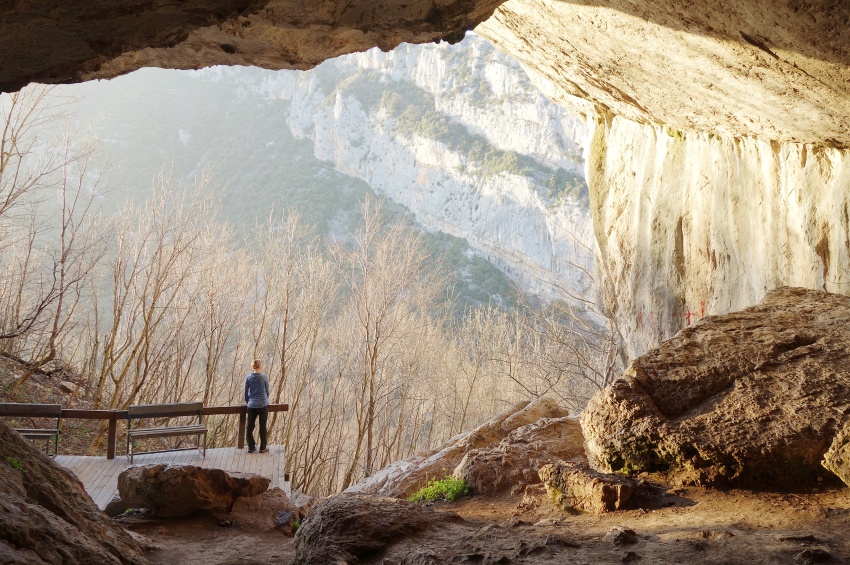
You’ll be transferred to Pellumbas by coach. We begin our trek along the mountain slope that takes us down to the river canyon. Once we arrive at the Black Cave, we’ll explore inside to get a better look at the impressive stalactites and stalagmites. Leading experts believe it was one of the first prehistoric dwellings in the region based on relics and tools dating as far back as the Neolithic era. If we have the time, we’ll jump in the river for a swim on our way back.
PLEASE NOTE
- Please wear comfortable, sturdy walking shoes.
- Hike: Approx. 2h45 walk, 1,148-foot altitude difference (350 m), moderate level.
- The order of the visits can change.
- Times are approximate.

Leaving from the port in Sharm El-Sheikh, we'll head over to the marina, where you'll board a glass-bottom boat and cast off to observe the amazing marine life found in the Red Sea. You'll have a great view of the coral reefs and tropical fish of all sizes while the ship's captain talks about each species and the environment you see under your feet. From the top deck, you can take in the magnificent views of Naama Bay and the mountains that surround the resort as you enjoy a refreshing drink. The next stop is the old part of Sharm El-Sheikh, home to the Ottoman-style Al Sahaba Mosque, inaugurated in 2017. Afterwards, enjoy a stroll through the city's old souk.
PLEASE NOTE
- The order of the visits can change.
- Times are approximate.
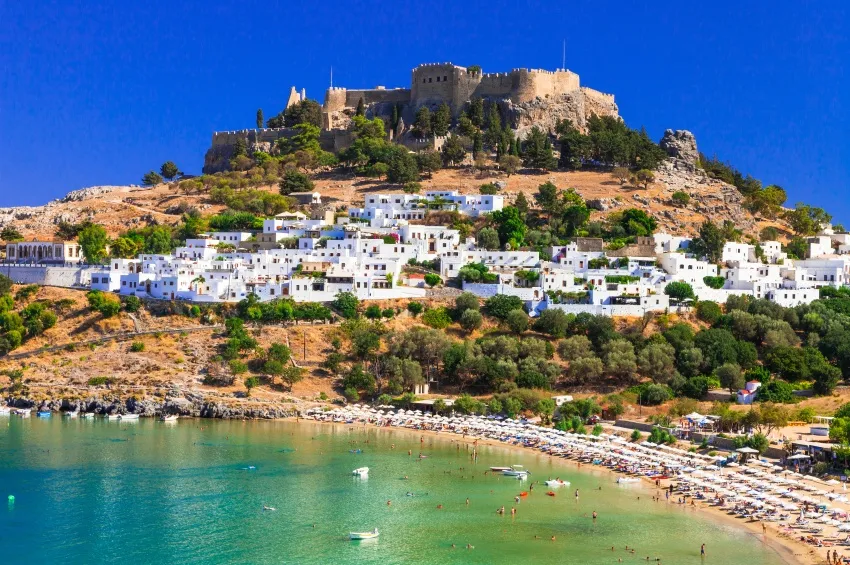
Rhodes is famous for gorgeous beaches and awesome weather, but it is also jam-packed with history, especially noteworthy medieval tales. The island is home to one of the largest medieval centers still thriving today. Don't miss this opportunity to enter the city walls and wander the labyrinth of streets. The fort, bastion, walls, gates, minarets, old homes, fountains, and peaceful squares are as if King's Landing has come alive. You'll visit the Kos Town Castle at the entrance of the harbor. The Knights of Saint John built the fortress and stronghold we see now during their rule from 1314 to 1522.
PLEASE NOTE
- The order of visits can change.
- Times are approximate.

The Bibliotheca Alexandrina commemorates the Great Library of Alexandria and aims to be a center of cultural and scientific excellence in the Mediterranean Region. The Fort of Qaitbay was built in the 15th century on the site of the ancient Lighthouse of Alexandria. The fort's medieval edifice and the view of the sea from its top make it one of the most important sites in Alexandria.
PLEASE NOTE
- The order of the visits can change.
- Times are approximate.

Head to Ghiaie Beach, known for its beautiful seabed and polished white pebbles.(1)
PLEASE NOTE
- The order of the visits can change.
- Times are approximate.
- (1) The beach excursions listed are examples and can be changed at any time during the cruise because of crowds.
This loop begins at the church in Pieve heading towards the ruins in Chiesa Nera. The bucolic trail passes through chestnut tree patches and the Corsican maquis (approximately one hour walk to the ruins). From there, you'll have a fantastic view of the Agriates and the faraway sea. The trail then descends about a mile to a beautiful path to the right taking you down to the vestiges of the Romanesque San Cesariu chapel. Surrounded by forest, the chapel has been partially restored and well preserved. This round-trip detour is truly worth the effort. The last leg back to Pieve offers great views of Saint-Florent and the surrounding villages. In the afternoon, enjoy a tour of San Michele de Murato Church and the beautiful views from above. The chapel, built when Corsica was governed by the Republic of Pisa in the 11th century, boasts the traditional Pisan, bi-color style—alternating dark and light color stones assembled irregularly in checkerboard and striped patterns—much like famous structures found in Pisa and several churches throughout Tuscany. Enjoy a spuntinu snack (Corsican sausage and a glass of wine) as the shepherds once did. (Approximately 7 hours, 8 km/5 mi., approx. +400m/-400m (+1,640/-1,640 ft.) elevation gain).
PLEASE NOTE
- The order of the visits can change.
- Times are approximate.
- Good walking shoes are recommended.
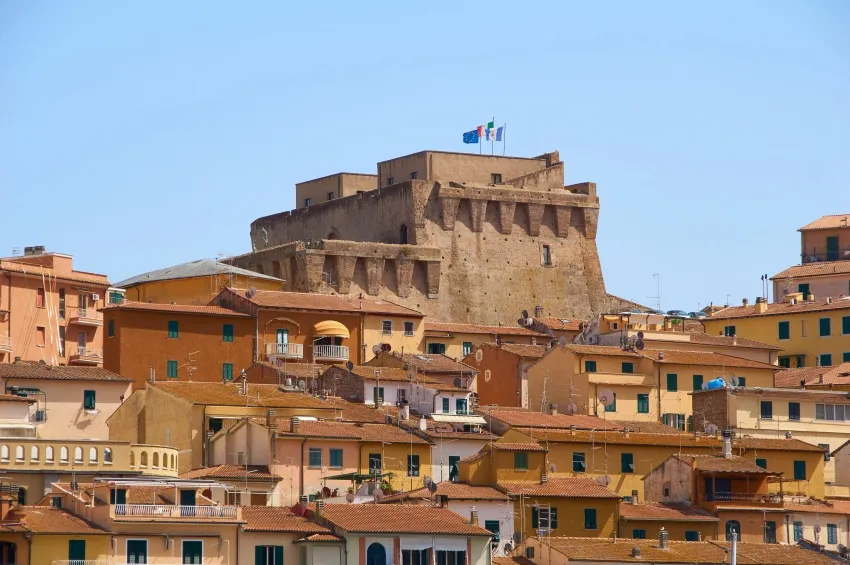
Sit back and relax in the hot, mineral-rich water enjoyed by others for more than 3,000 years. The impressive, natural, turquoise-colored waterfall enhances this dreamy, singular experience.
PLEASE NOTE
- The order of the visits can change.
- Times are approximate.

One of the most fascinating cities in Sicily awaits us today. The 2,700-year-old city of Syracuse played a key role in ancient times when it was one of the major powers of the Mediterranean world. You'll visit Ortygia, the small island that is the historical center of the city. You'll come across the majestic ruins of the Greek Temple of Apollo, the Piazza Archimede, and the Piazza Duomo, an elliptical open space lined with harmonious and impressive buildings.
PLEASE NOTE
- The order of the visits can change.
- Times are approximate.
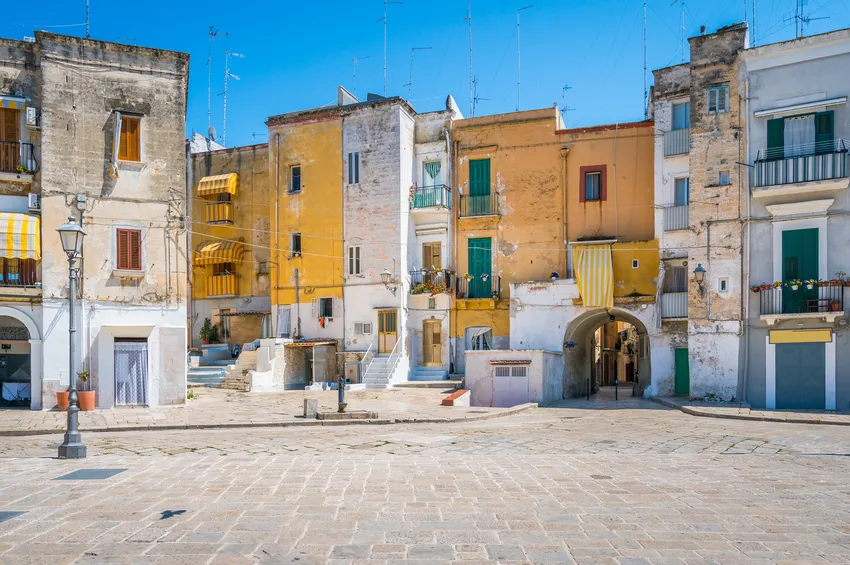
Bari sits on the fertile coast facing the sea and serves as a gateway to the Adriatic. Its medieval, well-preserved old town contains a labyrinth of streets and alleys, along with beautiful palaces and several Roman monuments.
PLEASE NOTE
- The order of the visits can change.
- Times are approximate.

.
PLEASE NOTE
- Good walking shoes are recommended.
- The order of the visits can change.
- Times are approximate.
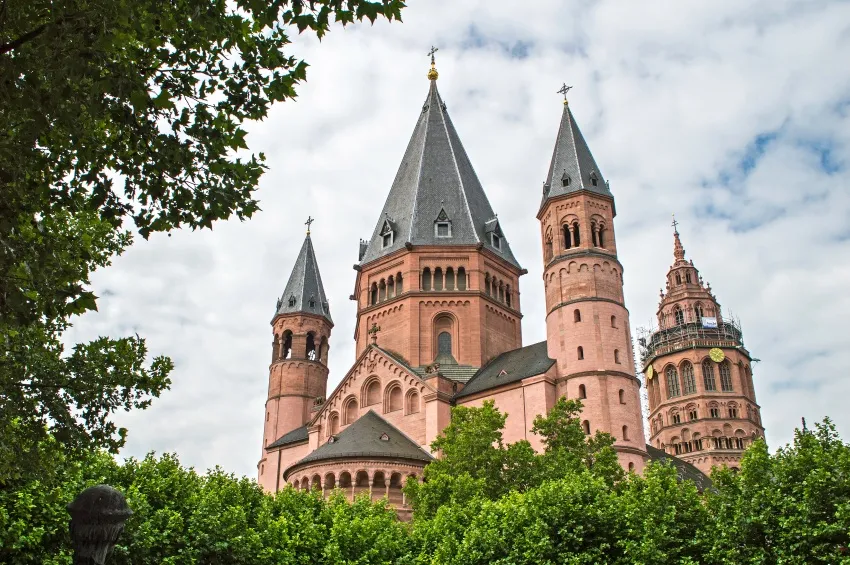
You will set off on foot for a guided visit of Mainz. Located on the banks of the Rhine opposite the confluence of the Rhine with the Main, Mainz will captivate you with its quite incomparable lifestyle, its unique charm and its openness to the world. You will be able to immerse yourself in this unique atmosphere as you wander round the Market Square, in the middle of which stands the Heunensäule, a sandstone column commemorating the history of Mainz, erected in 1975 on the occasion of the Cathedral millennium celebrations. In the company of your guide, you will be able to enter the magnificent Cathedral, whose construction started in 975 and which has left a deep mark on the history of the town. The interior of the cathedral houses some wonderful historic treasures, including tombs and funerary monuments from the 13th to the 18th centuries. You will also be able to admire the striking contrast between the massive red sandstone cathedral and the Romanesque Gotthard Chapel in light-colored stone. You will also have the opportunity to wander up and down the lovingly restored streets in the old town towards Gutenbergplatz. Gutenberg was born in Mainz between 1394 and 1400 and is acknowledged in Europe as the inventor of the printing press with mobile letters. You will also discover a German tradition as you admire the Carnival Fountain.
PLEASE NOTE
- Good walking shoes are recommended: visit on foot.
- The order of the visits can change.
- Times are approximate.
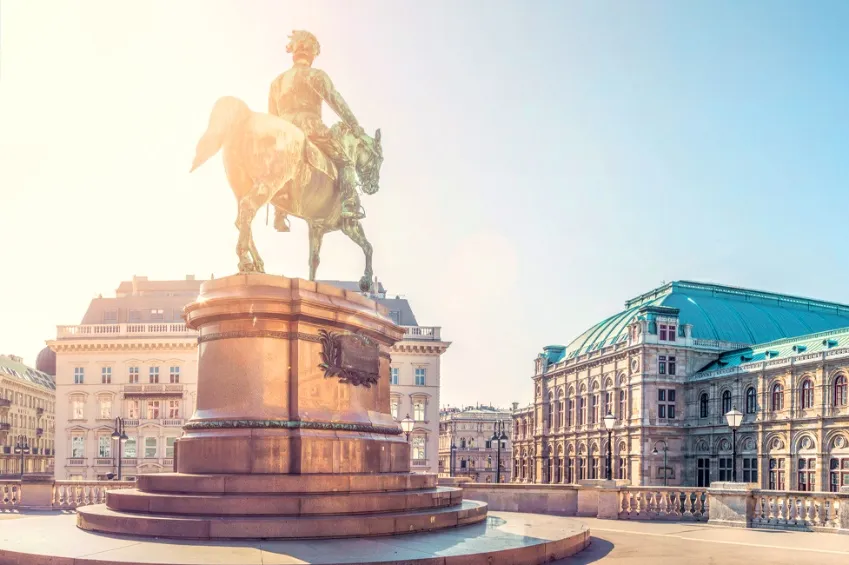
You will begin the tour by taking the famous Ring, one of the personal projects of Emperor Franz Joseph. In 1857, he decided to take down the ramparts that enclosed the city center and had this boulevard built lined with fine buildings. Along the Ring you will admire this architectural showcase of the old Austro-Hungarian monarchy, including the State Opera, the Hofburg Palace, the Natural History Museum, the City Hall, the Burgtheater and more.
PLEASE NOTE
- Comfortable shoes are recommended.
- If we have time, you will enjoy free time close to St Stephen's Cathedral.
- The order of the visits can change.
- Times are approximate.
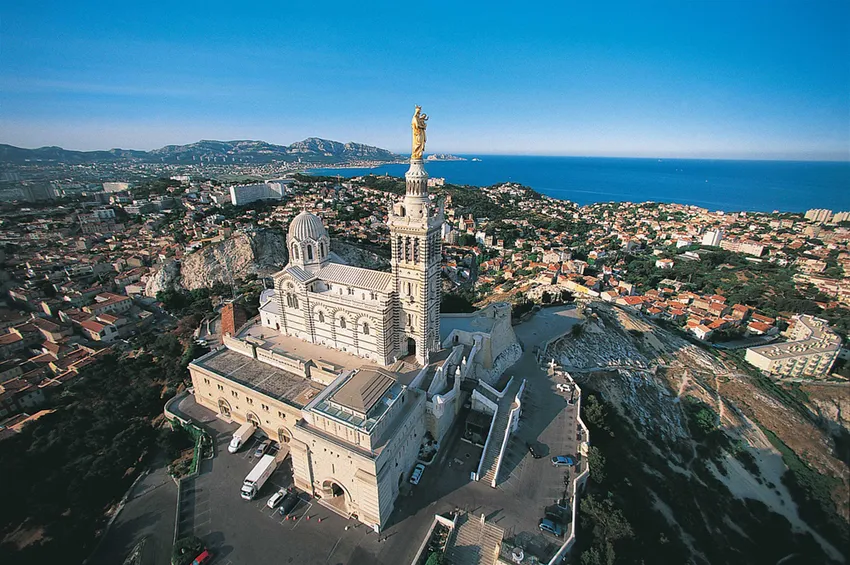
We’ll leave by coach for an optional visit to Marseille, a city that seems to be a study in cultural and architectural contrasts. Beautiful, significant vestiges that have accumulated over the past 26 centuries mark each neighborhood and district. Just by walking its streets, visitors get a feel for the city as it began under the Greeks and Romans up to the prestigious architectural feats of the 19th century. This tour gives a good overview of the monuments, sites, and museums to discover. We’ll check out La Canebière, Marseille’s famous street full of restaurants and stores. After, we'll head to the pretty Old Port and then up to the majestic basilica that overlooks the city. The basilica took 21 years to complete. The lower crypt is carved from the rock in the Romanesque style, while the upper structure is Neo-Byzantine decorated with mosaics. We’ll return on board the ship in Martigues at the beginning of the evening.
PLEASE NOTE
- The order of the visits can change.
- Times are approximate.
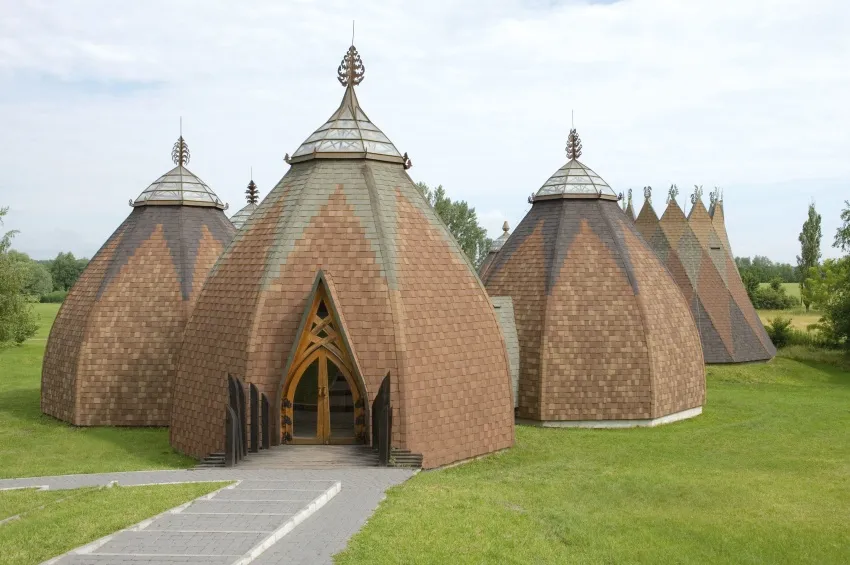
Departure by coach towards Ópusztaszer National Heritage Park.
In the company of our guide, we will discover Ópusztaszer National Heritage Park. We'll first set out to the roundhouse which holds the impressive panoramic painting by Feszty - The Arrival of the Hungarians. Then, we'll learn more about the Szeged flood from 1879 inside the Lockmaster's house and discover an exhibition about Man and the Forest inside crown-shaped tents. Afterwards, we'll move on to the open-air ethnographic museum with its typical farms from the Szeged region, a windmill, a primary school and more. Enjoy some free time in the park before returning on board.
PLEASE NOTE
- Good walking shoes are recommended: visit entirely on foot.
- The order of the visits can change.
- Times are approximate.

Guided tour of Colmar, the capital of Centre Alsace. Discover with our hostess a city rich with more than one thousand years of European history. Astonishingly unaffected by the passage of time, its homogenous historic center has been listed as a preserved sector and very carefully restored and enhanced for more than twenty years. Discover with our hostess the marvelous setting of Old Colmar, the historic center, the "little Venice" district, the former customs and the cathedral square. Enjoy some free time before coming back on board by coach in Breisach.
PLEASE NOTE
- The order of the visits can change.
- Times are approximate.
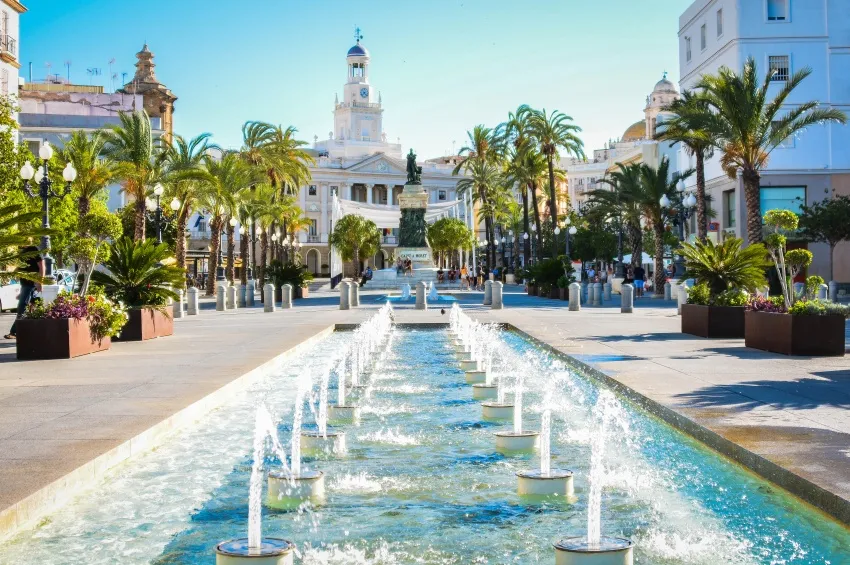
Departure on foot to visit Cadiz, one of the oldest cities in Europe. The old center brings together the most characteristic areas of the city, including beautiful baroque churches and elegant mansions, many of which are adorned with painted facades of delicate pastel colors and ornate wrought iron balconies. Sights include the castle of San Sebastian built in the 17th century, the popular neighborhood of the Vina, the cathedral whose construction lasted 116 years, which explains the diversity of styles. In the 18th century, King Phillip II of Spain commissioned the construction of many important monuments in this area in order to protect the town from seaborne assaults. You'll be able to admire the Castillo de Santa Catalina, the Castillo de San Sebastián and many more of the monuments that Cristobal de Rojas had built at the time.
Our tour continues towards the Plaza de España, formerly known as Plaza del Carbón, which was extended to mark the 100th anniversary of the constitution. The square contains the Monument to the Constitution of 1812, created by architect Modesto López Otero and sculptor Aniceto Marinas. Your tour ends via the Plaza de las Flores. You will be enchanted by this blue and white city. Return on board in Cadiz.
PLEASE NOTE
- Good walking shoes are recommended: visit entirely on foot.
- The order of the visits can change.
- Times are approximate.
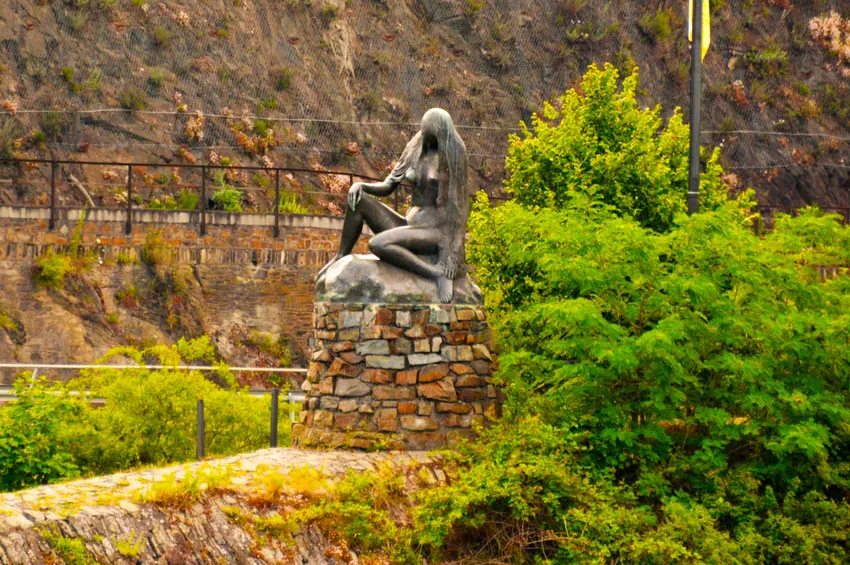
Departure by coach towards the famous Rock of the Lorelei. You'll get to admire the Rhine Valley and the original rock statue of the mythical Lorelei. We'll stop off on our way back for a delicious treat: one of the greatest German traditions, Kaffee und Kuchen. You'll get to pick a piece of cake of your choosing and enjoy it together with a hot steaming cup of coffee or tea. After our indulgent break, we'll return to the ship by coach.
PLEASE NOTE
- The order of the visits can change.
- Times are approximate.
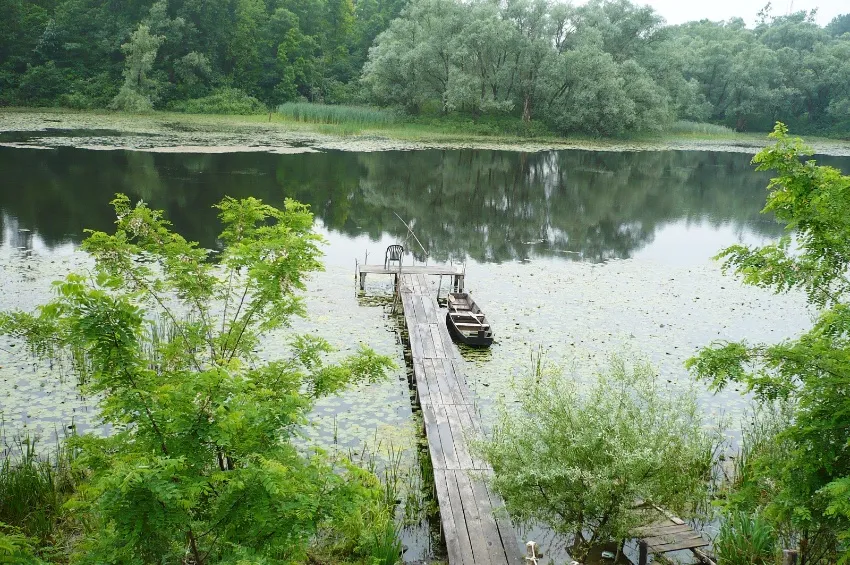
Departure by coach from Jasenovac towards Lonjsko Polje, the largest protected wetland in both Croatia and the entire Danube basin where you'll be able to admire migratory birds. We'll then move on to Krapje to attend a short introductive film about this particular region. We'll stop in the small village of Cigoc where we'll visit a typical local house with its stork's nests. The visit will end with a tasting of local products in an authentic Slavonia farmhouse.
PLEASE NOTE
- Good walking shoes are recommended.
- The order of the visits can change.
- Times are approximate.
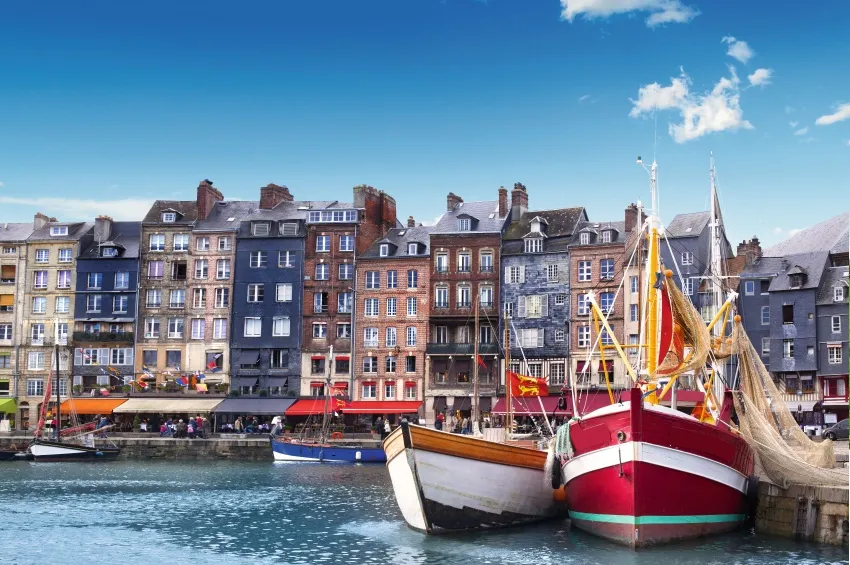
We'll meet up with our guide and set off on the tour on foot. Honfleur, the cradle of Impressionism, is located at the mouth of the Seine as it flows into the English Channel. Untouched by the passage of time, this small port has kept the landmarks of its rich past, making it today one of the most visited towns in France. We'll begin with Saint Catherine's Church, the largest wooden church in France. It was listed as a historical monument in 1879 and has been the subject of scrupulous research by many archaeologists and historians. We'll then set out for our coach tour of the Côte Fleurie, stopping for lunch on the way. Our first stop will be Deauville, one of the most prestigious seaside resorts in all of France. We'll stroll along the famous boardwalk, built in 1923. After, we'll continue on to the Château du Breuil. The Château du Breuil company produces its own cider, coming from a 100% natural fermentation. When the cider has reached its proper flavor, distillation can start and the process of making the quality Calvados begins. The tour will come to a close after enjoying a tasting, of course. We'll return on board.
PLEASE NOTE
- Times are approximate.
- The order of the visits can change.

We’ll be greeted by our guide for a tour on foot of the city. Honfleur, the cradle of Impressionism, is located at the mouth of the Seine as it flows into the English Channel. This fortified city played a very important strategic role during the Hundred Years' War. Commercial and maritime developments intensified during the 16th and 17th centuries, and shipyards became prominent here a century later. The tour will begin at the old port, the most charming area in the city. The narrow houses squeezed against each other are quite a unique sight. This tour has just one rule: enjoy! Next, we’ll see Saint Catherine’s Church, the largest wooden church in France. Then we’ll head to the salt warehouses, huge structures dating back to the 17th century. Our tour will wind up with a visit to Saint Léonard Church. Its Gothic-style entrance is a sight to behold.
PLEASE NOTE
- The order of the visits can change.
- Times are approximate.
- Good walking shoes are recommended.
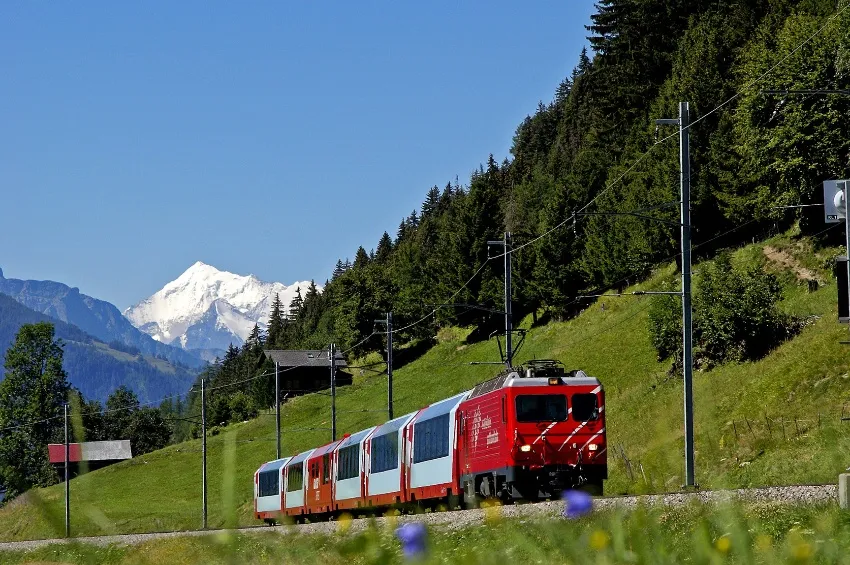
Departure from Basel in the company of your hostess for Andermatt and excursion aboard the "Glacier Express”. We'll board the Glacier Express for a panoramic voyage of the Alps. You'll discover the breathtaking beauty of Swiss landscapes through this unique and unforgettable moment. We'll enjoy lunch on board the train or in a restaurant (depending on availability). Back to Basel where our ship is moored.
PLEASE NOTE
- Good walking shoes are recommended.
- For your information, please note that the coach ride should last approximately 3,5 hrs from Basel to Andermatt, and 3,5 hrs from Coire to Basel.
- The order of the visits can change.
- Times are approximate.
- INCLUDED in the GSB cruise.
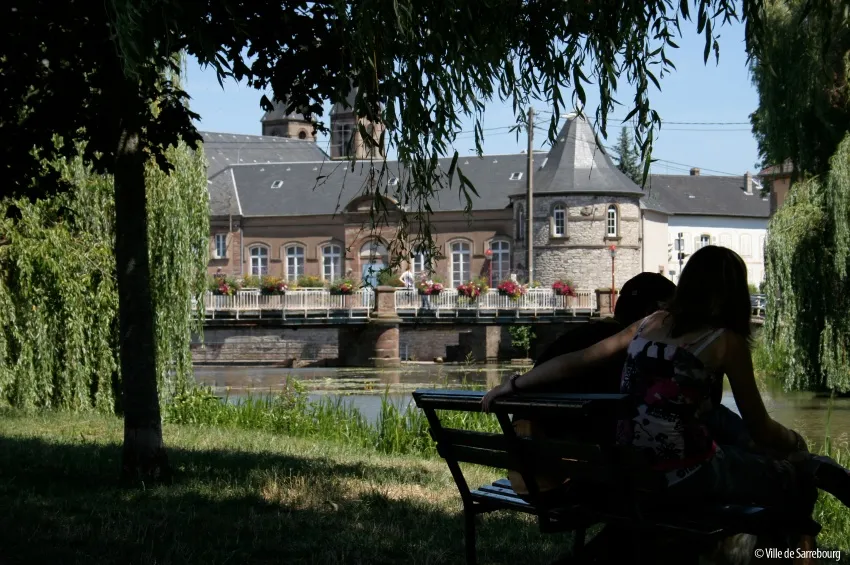
Set off by coach and head to Sarrebourg. Sarrebourg, located at the gates of the Vosges and Alsace, is a town with a rich diversity of attractions. Its historic and cultural heritage holds many unexpected treasures. The town began to develop during the 1st century A.D. and over time, has seen remarkable growth. Its nickname "Sarrebourg la Marchande” (or Trader) is due to its many shops and businesses. During the guided visit of the town, you'll be able to admire monuments like the cinema, built in 1912 during the Art Nouveau movement, the library and the Custine Hotel. You'll also get to admire the square and the Chapel of the Cordeliers with its quite unique stained glass window by Marc Chagall. This true hymn to peace was created over a period of 18 months and installed in 1979. The chapel was built in 1265 but was demolished as it looked likely to fall into ruin. A decision was made to preserve only its choir. Marc Chagall was then contacted and asked to design and create a stained glass window to close off the choir. It is the largest stained glass window ever made by the artist - 12 metres high by 7.5 metres wide. Other stained glass windows were also created by the artist to act as the side windows. Afterwards, take a stroll along the Grand'rue and admire the beautiful facades from the 18th century. End of the guided visit of Sarrebourg. Return on board.
PLEASE NOTE
- Good walking shoes are recommended for this excursion
- The order of the visits can change.
- Times are approximate.
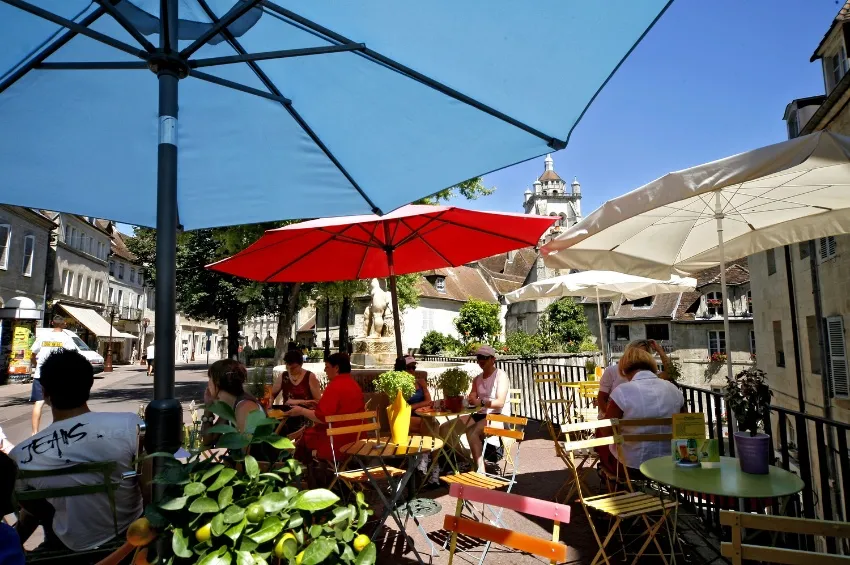
Discover Dole, the birthplace of Louis Pasteur, in the company of your guide as you follow the "trail of the Perched Cat”. This is a reference to the author Marcel Aymé, creator of the famous Contes du Chat Perché, who spent his childhood years in Dole. Perched on a limestone hillside alongside the canal, Dole was the capital of the County of Burgundy before it became part of the French kingdom in 1678. Along your tour, you will discover the many historic monuments which have granted Dole the City of Arts and History Label. You'll also get to see Louis Pasteur's birthplace which today houses a museum tracing the history of the scientist's life, the Cours Saint-Mauris, a garden where the fluid design of the lower section contrasts with the straight paths of its upper section. Enjoy the wonderful views over the Chaux forest from the garden's terrace. You will also be able to see the former Hôtel-Dieu, which was a hospital for the poor built in the 17th century. Since 2000 it has housed the town's media centre, municipal archives and Dole's Town of Arts and History heritage initiative. You will end your visit of Dole with the famous Collegiate Church of Notre-Dame, built between 1509 and 1580, whose bell tower dominates the historic town center. There are many other monuments that you will be able to admire during the tour as you discover this town which is steeped in history. Afterwards, enjoy some free time before returning on board at your own pace.
PLEASE NOTE
- Good walking shoes are recommended for this excursion.
- The order of the visits can change.
- Times are approximate.

Set off for the pier in downtown Strasbourg where you will board a panoramic boat which will take you to the famous district of the Petite France. Its canals, charming houses with colored, half-timbered walls and narrow alleyways will enchant you. You will glide past the Tanners Quarter, the Covered Bridges (Ponts Couverts) and the Panoramic Terrace on the Vauban Dam. Our cruise will continue through the German Quarter. Following the French defeat in 1870, Germany planned to make Strasbourg the capital of the Reichsland or Imperial Territory of Alsace-Lorraine. This district, referred to as the "new town", represented a new form of urban planning, featuring wide roads, monumental administrative and cultural buildings, and luxurious private homes. Landscaping also played a key role in this impressive urban planning scheme. Then you will get the chance to see the European Parliament Building, completed in 1999, which was designed to host monthly sessions of the European Parliament. The architecture of the building is based on a combination of circles and ellipses, with the building laid out and organized into several clearly identified areas. Finally you'll discover the Human Rights Building where the European Court of Human Rights is located. Return on board.
PLEASE NOTE
- Good walking shoes are recommended for this excursion.
- The order of the visits can change.
- Times are approximate.
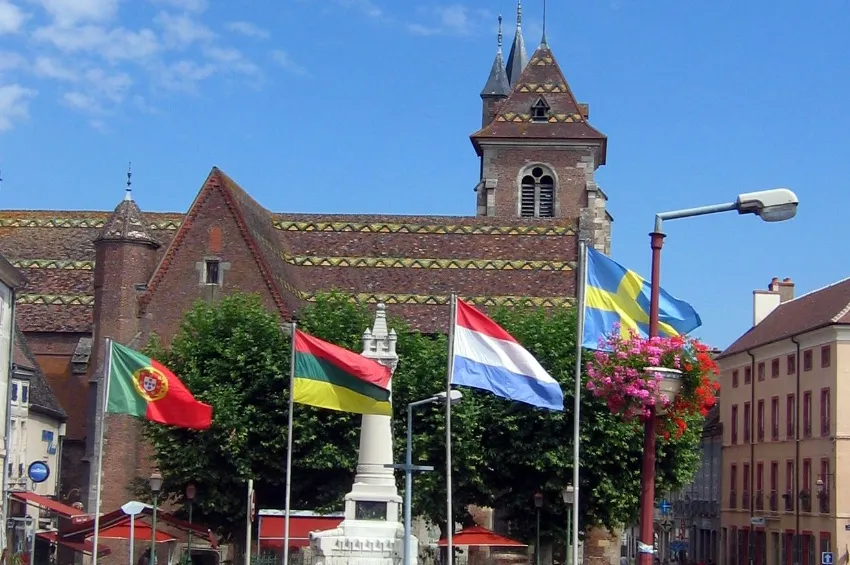
Saint-Jean-de-Losne is a small town with many monuments bearing testimony to a rich and prestigious past. Today it is the capital of barging in France, lying at the heart of the French waterways and canal system in southern Burgundy. With the help of a guided visit of the town, in the company of a registered guide, you'll discover the exterior of the Monument Commemorating the Siege of 1636 and the Hôtel-Dieu which was a hospital founded in 1658 enclosed by a wrought iron fence dating from the 17th and 18th centuries. You will also visit the Gare d'Eau (or Water Station), the Church of St John the Baptist, built during the 16th century in a mix of Gothic and Renaissance styles, and the Batellerie Museum (also known as the Sailors' House), one of the oldest houses in town, dating back to the 15th century which recounts the history of navigation. Your visit of the town ends at the Hotel de Ville, a former town hall built in the early 17th century, where you'll get the chance to taste some local specialties.
PLEASE NOTE
- Good walking shoes are recommended for this excursion.
- The order of the visits can change.
- Times are approximate.
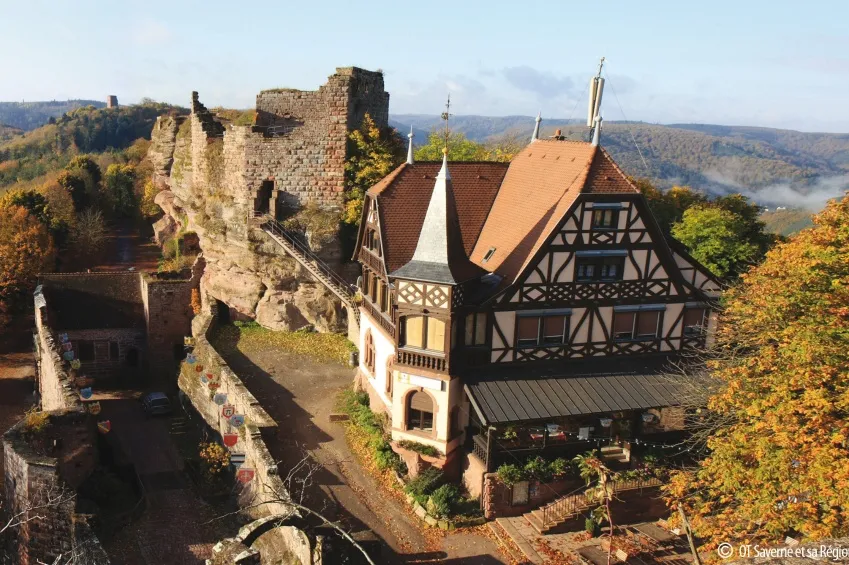
Enjoy unrivalled views over the Alsace plain from the Haut-Barr Castle, often called "the Eye of Alsace”. Constructed in 1170, it was transformed and restored during the 14th century. It was built at an altitude of 470 metres on 3 wide rocks linked by a footbridge called the "Devil's Bridge” and a series of staircases, which enabled the Bishops of Strasbourg to watch over the Zorn Valley and the Alsace Plain. With your guide, you will have the opportunity to discover this wonderful castle which has been listed as a historic monument since 1874. On your return journey to the boat, you will stop off at the Chappe Tower, an ancient telegraph, where you'll see an interactive display on the ancestry of all means of telecommunication. Since 1794, France was the first country to have a telecommunications network thanks to Claude Chappe who invented the aerial telegraph. From 1798 to 1852, the station at Saverne helped link Strasbourg to Paris. Return on board.
PLEASE NOTE
- Good walking shoes are recommended for this excursion.
- The order of the visits can change.
- Times are approximate.
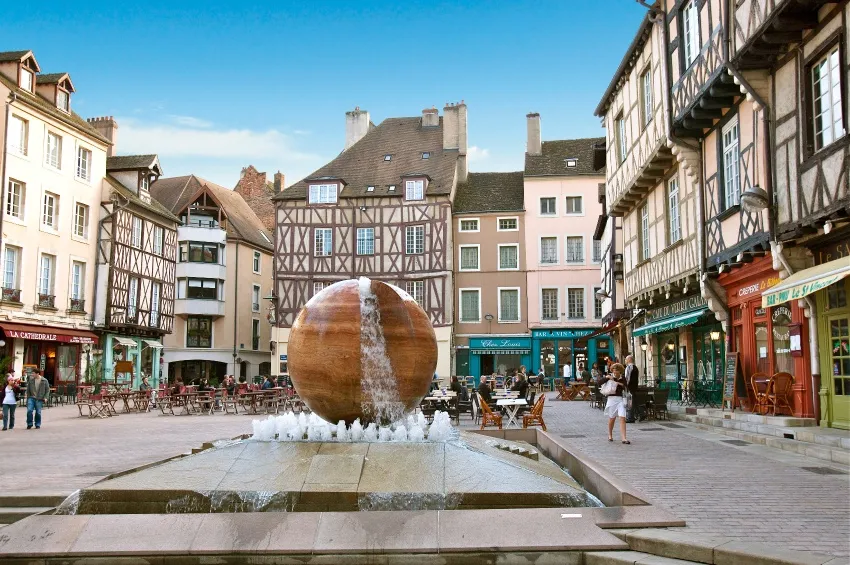
Set off on a discovery tour of Chalon sur Saône and its old town. Chalon came into being as the main port to the Eduens people during the Gaulish period and saw its glory days at the beginning of the Middle Ages as the Merovingian capital of Burgundy, and then again at the end of the same period as the site of famous international fairs. Joseph Nicéphore Niepce who invented photography was born in Chalon in 1765, one more reason to the town's fame. Today, Chalon is a city of Art and History, and as you wander around the Old Town you will be delighted by the half-timbered houses built between the 15th and 17th centuries, the restored facade of St Vincent's cathedral and fine classical mansions dating from the 17th and 18th centuries. Our visit will continue downtown where you will enjoy a tasting of local specialties from Burgundy. Return on board.
PLEASE NOTE
- Good walking shoes are recommended.
- The order of the visits can change.
- Times are approximate.
- *Alcohol can be harmful to your health. Please drink in moderation.
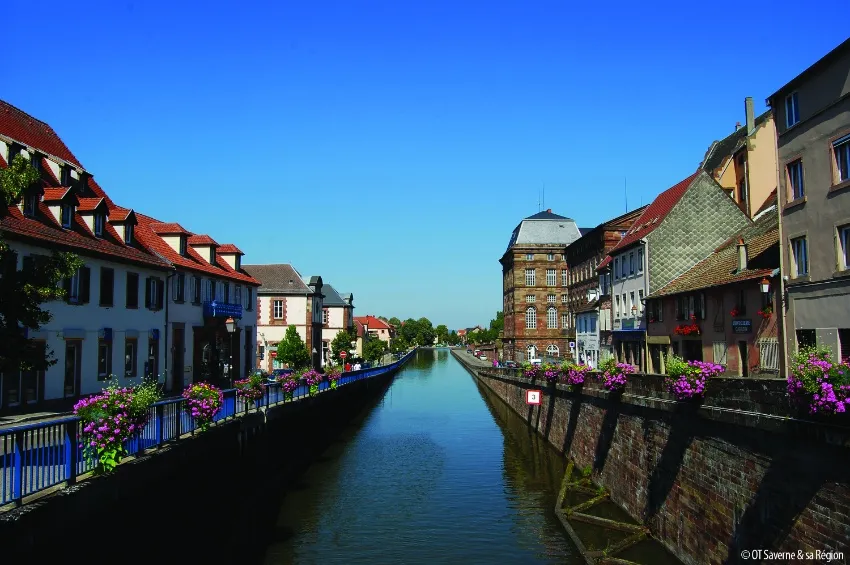
Departure for a guided tour of Saverne, a lesser known town despite its many places to see and admire. The town has preserved many relics from its past. Founded in Roman times, Saverne was the former residence of the Bishops of Strasbourg. This town has always been a major crossing point and a place of cultural exchange, thus considered to be the gateway to Alsace. You will visit the Main Street, with its unicorn fountain (the unicorn is the town's guardian and emblem), the Katz House, decorated with wonderful sculpted half-timbered walls, the Church of Notre Dame with its porch tower from the 12th century and the former convent of the Récollets founded in the 14th century. Return on board.
PLEASE NOTE
- Good walking shoes are recommended.
- The order of the visits can change.
- Times are approximate.

Departure for a walk to the Cirque du Bout du Monde, part of Natura 2000 sites - a European network of nature protection areas. There, you will admire the imposing chalk cliffs carved out by the river Cozanne which create a cirque where a 25-metre high waterfall was formed. Our coach will then take us to Mont de Sène, or the Mountain of the Three Crosses, an ancient Celtic religious site which overlooks the Santenay vineyards from a height of some 521 meters. This classified site is characterized by its rustic plants and wild bushes. Enjoy the amazing panoramic views of the surrounding main peaks and valleys, including the vineyards of the Côte de Beaune, the Saône Valley, Morvan, Jura and the Alps. Return on board.
PLEASE NOTE
- Good walking shoes are recommended.
- The order of the visits can change.
- Times are approximate.

The medieval town of Braubach, surrounded by vines, is dominated by Marksburg Castle.
Set off by coach for a guided visit of Marksburg Castle. Built in the 13th century, it sits high on a cliff overlooking the Rhine from a height of more than 160 meters and towers over the narrow and winding alleyways of Braubach's historic old town.
Marksburg is the only castle in the Rhine Valley never to have been destroyed. Beginning with the construction of the keep in the 13th century, the castle grew into its present shape throughout the succeeding centuries. The castle evolved and developed due in no small part to its defense system which was exemplary; a tunnel was constructed and strengthened with impressive vaults, cannons were added as were wooden gates and drawbridges that could be raised or lowered, to act as a defensive shield. This proved to be a recipe for success, providing an excellent far-reaching defense system for the castle.
You will be able to visit some quite remarkable rooms in the castle such as the impressive kitchen with its imposing open fireplace, the ladies' quarters, the knights' hall, the armory, the small tower bedrooms, the chapel, the wine cellar, the paths along the top of the walls and many other sights which will transport you back through time to the Middle Ages.
There is a little free time before returning by coach to the boat.
PLEASE NOTE
- The order of the visits can change.
- Times are approximate.

Discover the delightful town of Gray on our guided tour. The town became wealthy thanks to a wide range of industries and businesses, making Gray one of the main three strongholds in Franche-Comté. You'll have some time to admire the charming, traditional houses while your guide tells you all about the region's past. During your visit, you'll discover gorgeous monuments such as the Town Hall, a listed historic building and one of the most beautiful Renaissance edifices in Franche-Comté that was built between 1567 and 1572. You'll also be able to marvel at the Gothic-style Notre Dame Basilica, whose façade was only completed in 1863, as well as the Hotel-Dieu built between 1716 and 1747 under the orders of Louis XIV. Don't miss its three sculptures representing the theological virtues of Faith, Hope and Charity. Afterwards, enjoy a tasting of local products.
PLEASE NOTE
- Good walking shoes are recommended.
- The order of the visits can change.
- Times are approximate.
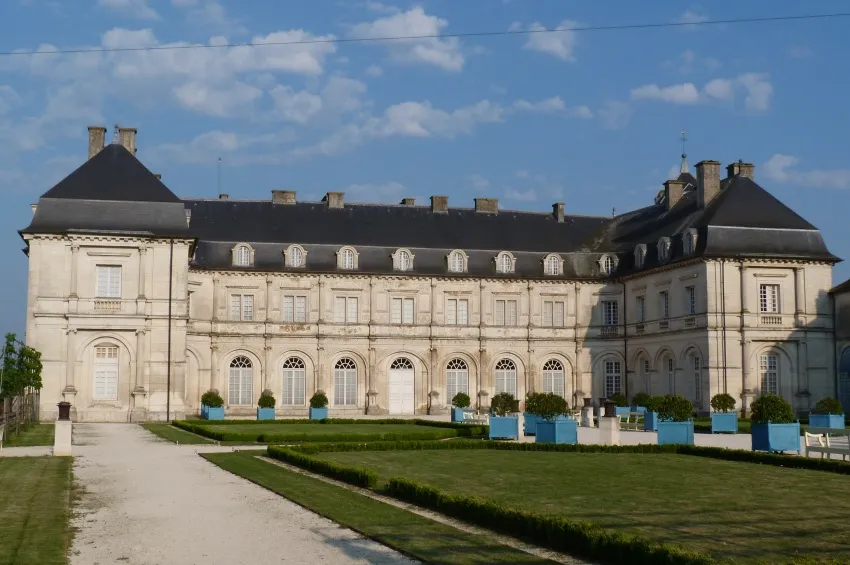
Set off by coach to the medieval castle at Champlitte, which has been a listed historical monument since 1909. The castle was first a stronghold and then a home, and was a seat of power located at the boundary of both the Duchy and the County of Burgundy. You will be able to admire the architecture of the castle and understand its history through your guided visit. Flemish influences are in great evidence but nonetheless, the décor is much more provincial in style. You will also visit the Museum of Popular Arts and Traditions, an ethnological museum located in the castle, where the wealth of exhibits gives a glimpse into life at the turn of the 20th century.
PLEASE NOTE
- Good walking shoes are recommended.
- The order of the visits can change.
- Times are approximate.
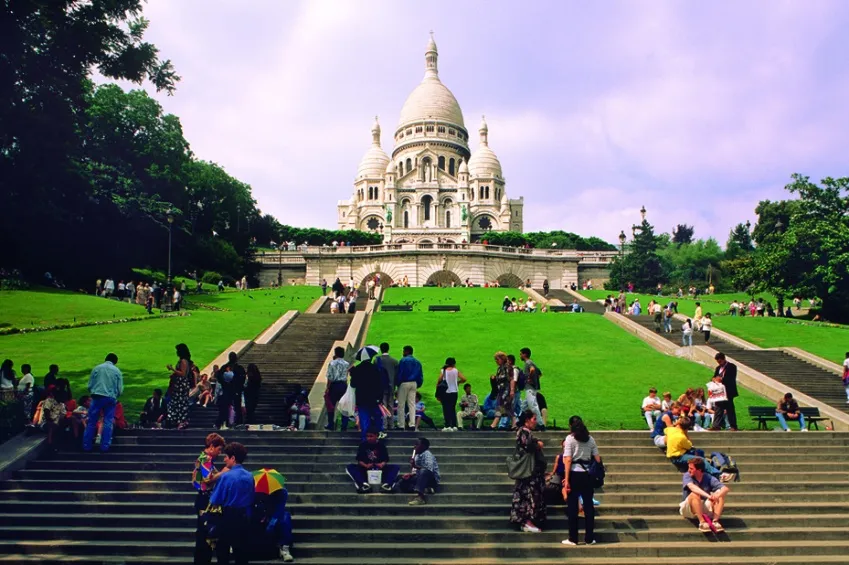
Guided tour of Montmartre. A hill that reaches a height of about 427 feet, located in the north of Paris, Montmartre has long been known as the premier artist's enclave in the city. Montmartre's most recognizable landmark is the bright-white Sacré-Coeur Basilica, constructed from 1875 to 1914. Inside the Roman-Byzantine style place of worship, the ceiling is decorated with the largest mosaic in France. From the top of the Butte Montmartre, you'll experience one of the most beautiful panoramic views of the capital.
PLEASE NOTE
- The order of the visits can change.
- Times are approximate.
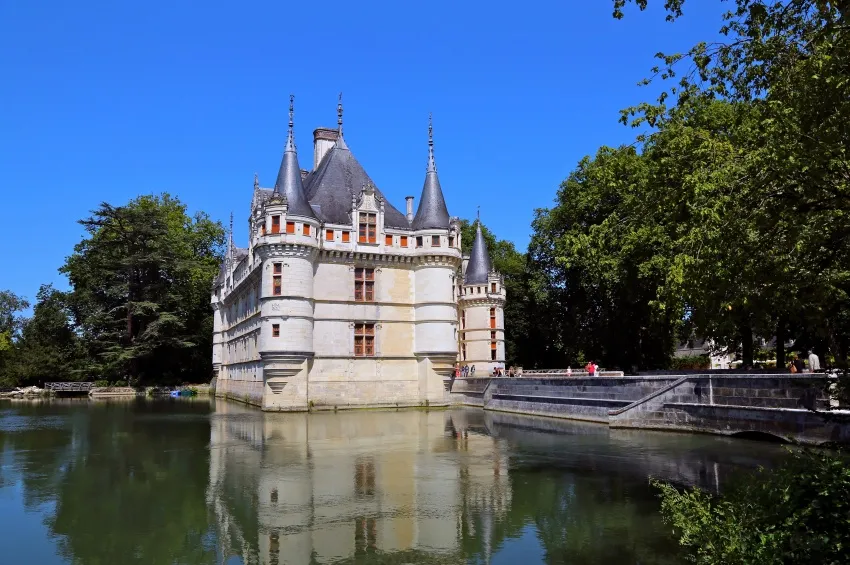
We'll leave by coach for the Château d'Azay-le-Rideau. Built on a small island in the middle of the Indre River, the château as it is seen today was built under Francis I by Gilles Berthelot, a wealthy financier who wanted to incorporate its medieval past alongside the latest architectural styles of the Italian renaissance. The chateau is a French national monument and possesses all the refinement found in the French Renaissance. We'll continue to Villandry for lunch. After lunch, enjoy a walk through the lovely gardens surrounding the Château de Villandry. Spread out over an impressive area, the gardens bring together aestheticism, diversity and harmony. Afterward, we'll continue our tour and visit the Château d'Ussé. Rebuilt in the 15th and 16th centuries, this stronghold with fortified towers, turrets and steeples looks like something out of a fairytale. The castle is still inhabited today and takes visitors back to a time of legends and fairytales. It is thought to have inspired Charles Perrault when writing "Sleeping Beauty”.
PLEASE NOTE
- The order of the visits can change.
- Times are approximate.
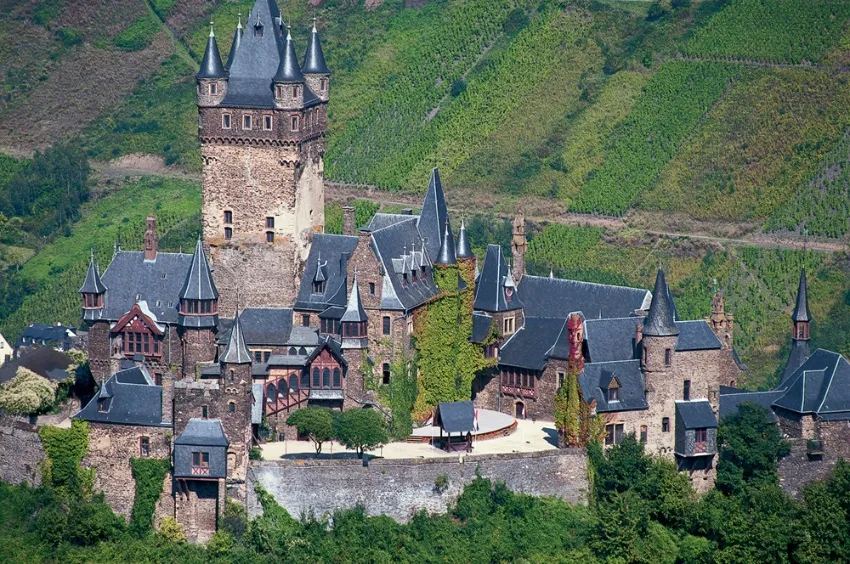
A stroll through the older section of Cognac, listed as a Ville d'Art et d'Histoire (French City of Art and History) since 2012. Take in the major sites—including the castle where Francis I was born and the lavish homes of salt and brandy merchants—as you walk along the narrow, history-laden cobblestone streets. Five centuries of everyday life in Cognac exist within this urban heritage. Afterwards, we’ll visit the Musée des Arts du Cognac, where you'll familiarize yourself with the liquor’s passionate history through recollection of its viticulture, oenology, distillation, cooperage, commerce, and glassworks—as well as its modern packaging designs. The experience is a veritable homage to local production skills and techniques for its namesake product. Of course, we will enjoy a tasting of the most famous brandy in the world to make sure it keeps up to its reputation.
PLEASE NOTE
- The order of the visits can change.
- Times are approximate.
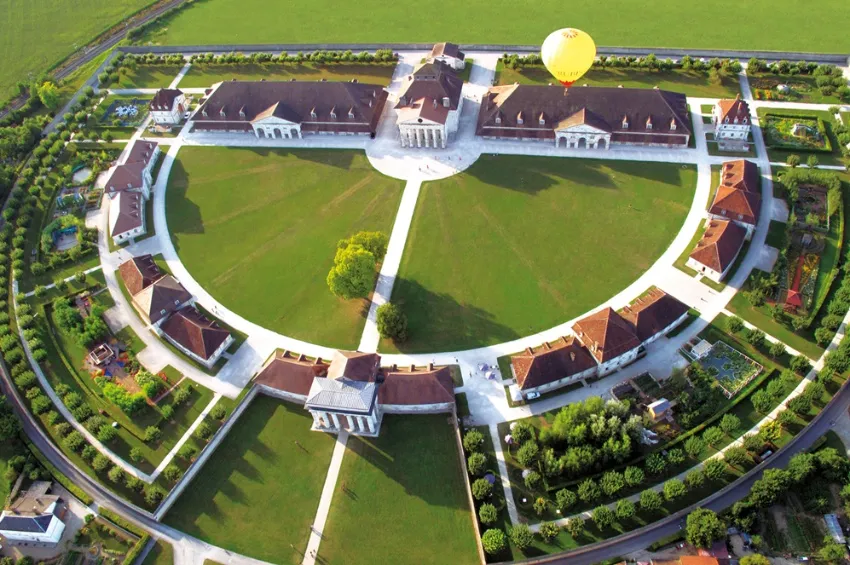
Transfer by coach to Arc-et-Senans. With an audioguide you will discover La Saline-Royale (or Royal Saltworks) which was built between 1775 and 1779 by Claude-Nicolas Ledoux at the wishes of King Louis XV. Today listed as a UNESCO World Heritage Site, this masterpiece consists of a complex of 11 buildings constructed in the shape of a semi-circle, and was where the salt workers lived and worked. There is time for a stroll in the gardens spread out behind the different buildings. Return on board.
PLEASE NOTE
- Good walking shoes are recommended for this excursion.
- The order of the visits can change.
- Times are approximate.

Set off for the center of Santenay, a charming little wine-producing town with a priceless historic heritage where a local wine producer will greet you. You will learn more about the wine making process and enjoy a tasting* of 3 wines. Return to the boat.
PLEASE NOTE
- You'll be able to purchase wine following the tasting which will be delivered to the ship.
- The order of the visits can change.
- Times are approximate.
- *Alcohol can be harmful to your health. Please drink in moderation.
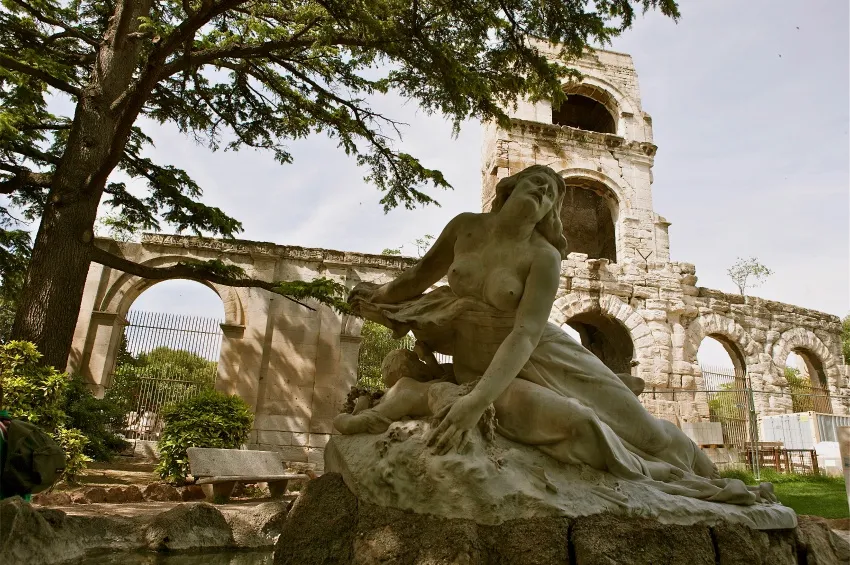
Set off on foot for a guided visit of Arles. Arles is over 2000 years old with exceptionally well-preserved ancient architectural masterpieces and is a real open-air museum. This important tourist and cultural site welcomes visitors with open arms. During the guided visit, you will see the Roman Amphitheatre (or Arena), the Theatre Antique and St Trophime Square with its cloisters and church that were part of the Arles Route, one of the three routes leading to Santiago de Compostela. We'll continue our tour with a visit to the Forum Square and finally the Roman Baths of Constantine. Next you will head off by coach for Tarascon to the Grand Servan estate, a traditional olive farm which produces the famous Provençal olive oil. Here at the foot of the Montagnette and set around a traditional Provencal farmhouse (or bastide) dating from the 18th century, the owners have planted a large orchard of some 150,000 olive trees. You will visit the estate sitting on bales of hay in trailers, pulled along by tractors. The owners will give you an explanation on how to plant and cultivate olive trees and how the Provençal "yellow gold”, or olive oil, is produced. Your visit will finish with a tasting of the products on the estate. Return to Arles by coach.
PLEASE NOTE
- Good walking shoes are recommended for this excursion.
- The order of the visits can change.
- Times are approximate.
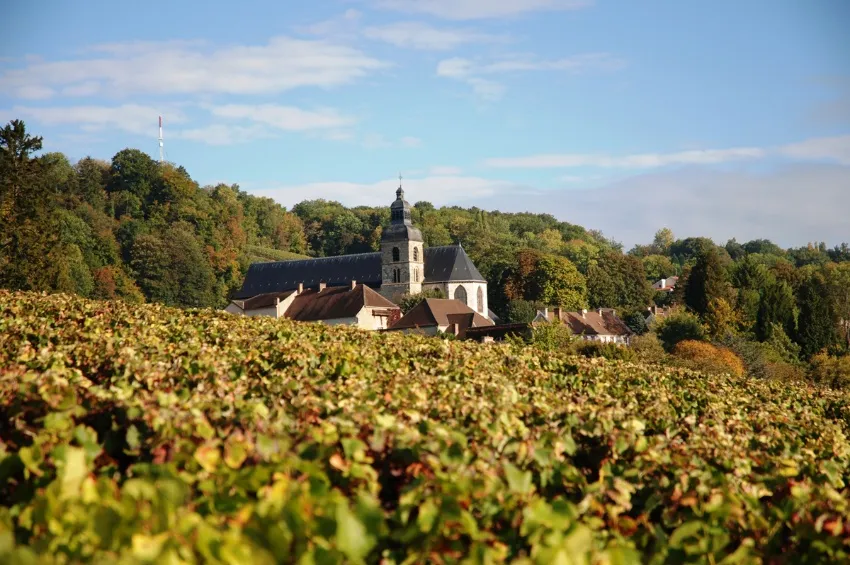
Our tour guide will greet us before we start off on our coach tour of the Champagne Tourist Route, where you'll discover the magnificent vineyard-dotted valleys of the region. You'll partake in a guided tour of the village of Hautvillers, once home to the famous Dom Perignon, a French Benedictine monk who made important contributions to the production and quality of champagne as we know it today. This picturesque village is located in the Montagne de Reims Regional Natural Park and is best explored on foot. Many of the little streets in the village have names that are reminiscent of the history of this village which is often called "The Pearl of Champagne”. We'll continue our visit to a prominent champagne house, with a tasting*, of course. After our tour, we'll return on board.
PLEASE NOTE
- Good walking shoes are recommended.
- The order of the visits can change.
- Times are approximate.
- *Alcohol can be harmful to your health. Please drink in moderation.
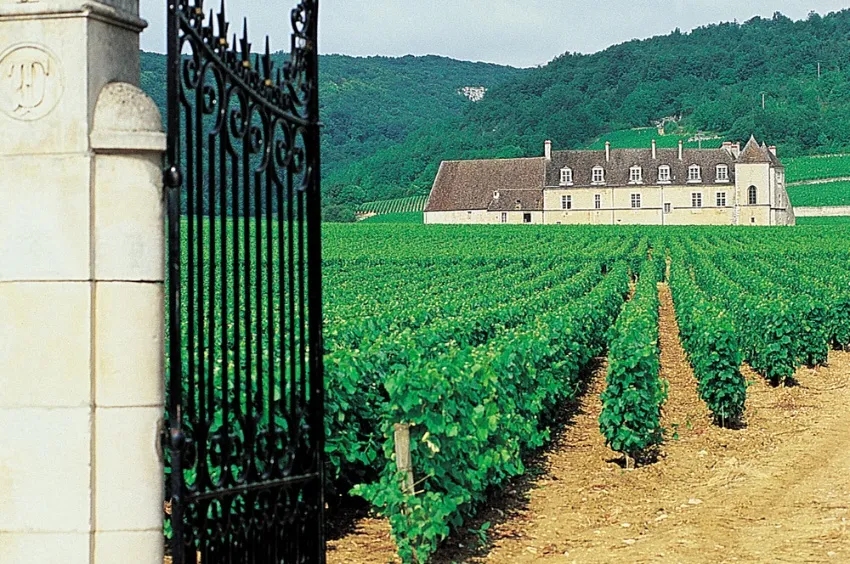
In the afternoon, set off on the Grands Crus Wine Route, including Gevrey-Chambertin and the Clos de Vougeot, with a visit of the Chateau du Clos de Vougeot. As early as the 12th century, monks from the Citeaux abbey built winegrowing outbuildings in the middle of the vines. The main building strongly influenced by the Renaissance style was added in the 16th century. The Clos Vougeot remains the symbol of more than 1000 years of Burgundy history. The journey continues to a wine estate for a tasting* of Burgundy wines. Here you will discover a traditional vineyard, visit the cellars that hold barrels and bottles, then take part in a commented tasting of the famous wines from the region. Return on board.
PLEASE NOTE
- Good walking shoes are recommended for this excursion.
- The order of the visits can change.
- Times are approximate.
- *Alcohol can be harmful to your health. Please drink in moderation.
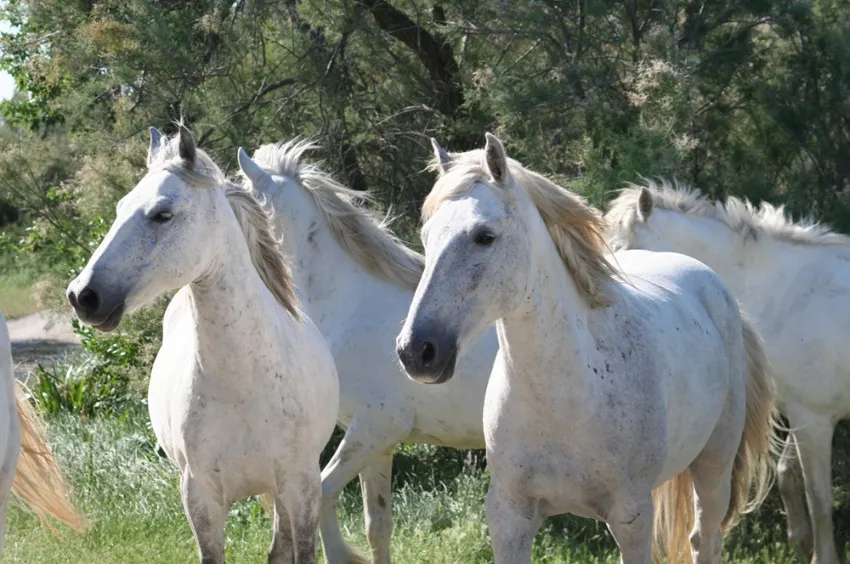
Set off on a panoramic guided tour of the Camargue. You can admire the rivers, marshland and lakes, the pink flamingos, bulls and the famous white Camargue horses. You can also admire the many salt marshes and rice fields, nowadays industries famous worldwide. A stop is planned in les Saintes-Maries-de-la-Mer, renowned as a pilgrimage centre for gypsies from all over Europe. The town of Les Saintes-Maries-de-la-Mer acts as the capital for those who are passionate about the Camargue and are entranced by its wild, natural beauty, its culture and its lively, authentic traditions. Return by coach to the boat.
PLEASE NOTE
- Good walking shoes are recommended for this excursion.
- The order of the visits can change.
- Times are approximate.
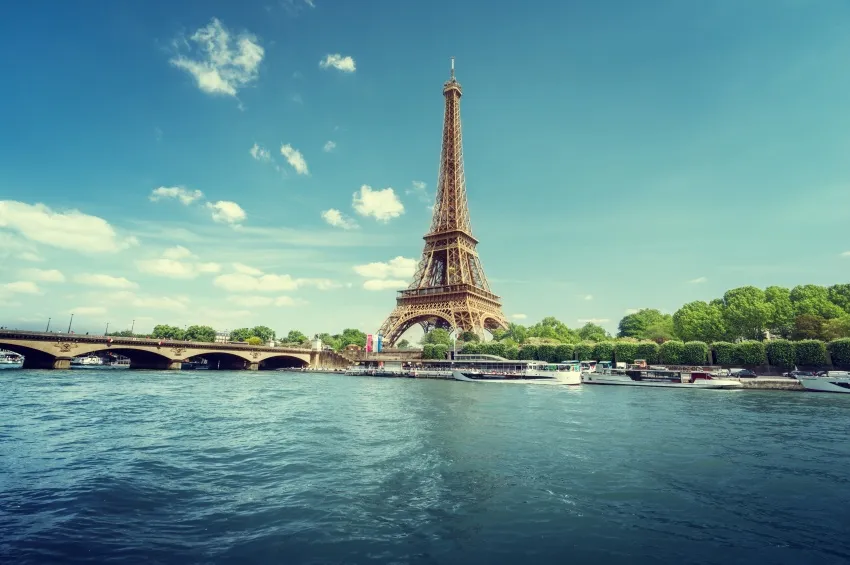
Guided visit of Paris. This tour of the city will bring you to some of the most important sites in the capital such as the Madeleine Church and the Louvre. Leaving from the Palais Royal, we'll walk through the unique Parisian covered walkways - pedestrian shortcuts with a life all to their own within the heart of the bustling city. Afterward, we'll return to the ship by coach.
PLEASE NOTE
- Wear comfortable, sturdy walking shoes for this excursion.
- The order of the visits can change.
- Times are approximate.

Guided tour of Dijon, the historic capital of Burgundy. The historic center is packed with many ancient houses, including some beautifully decorated townhouses (built by wealthy medieval burghers) and Parliamentary buildings, and occupies several hectares of what is known as a Protected Area (to preserve Dijon's ancient monuments and buildings for posterity). Return on board.
PLEASE NOTE
- Good walking shoes are recommended.
- The order of the visits can change.
- Times are approximate.
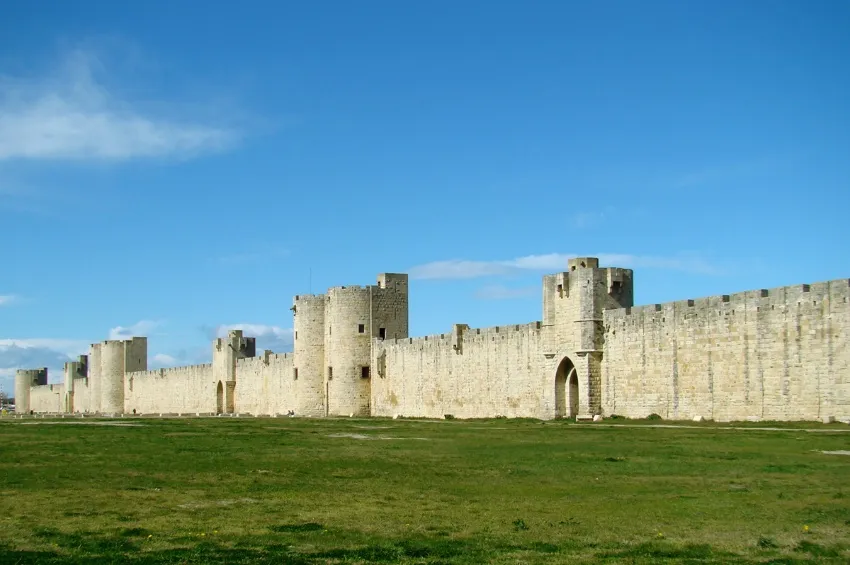
Set off for a guided visit of Aigues Mortes. The old walled town of Aigues-Mortes is a city with a prestigious heritage located in the middle of marshlands in one of the loveliest natural settings in Provence. You will then board a tourist train which will take you on a 90-minute journey through the salt tables, with a stop at the Museum of Salt. Return to the boat.
PLEASE NOTE
- Good walking shoes are recommended for this excursion.
- The order of the visits can change.
- Times are approximate.
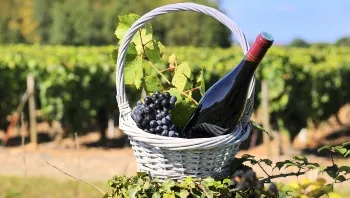
The rocky area to the south of Lyon is known for the lovely golden hues that glow differently as the sun moves across the sky. The area is as much a feast for the eyes as it is for your taste buds. Join us for a tour to discover the beauty of the region. We’ll visit a local vineyard for a tasting.*
PLEASE NOTE
- Good walking shoes are recommended.
- The order of the visits can change.
- Times are approximate.
- *Alcohol can be harmful to your health. Please drink in moderation.

We'll take a coach to Meaux and then have a guided tour of the Episcopal Palace. Your guide will tell you the story of the famous cheese of the region. After learning about Brie de Meaux, what would be better than tasting the cheese declared as "The Prince of All Cheeses" by Talleyrand in 1815 at your return on board? Transfer by coach to reach the boat.
PLEASE NOTE
- Wear comfortable, sturdy walking shoes.
- The order of the visits can change to better accommodate our passengers.
- Times are approximate and can change according to our navigational route.
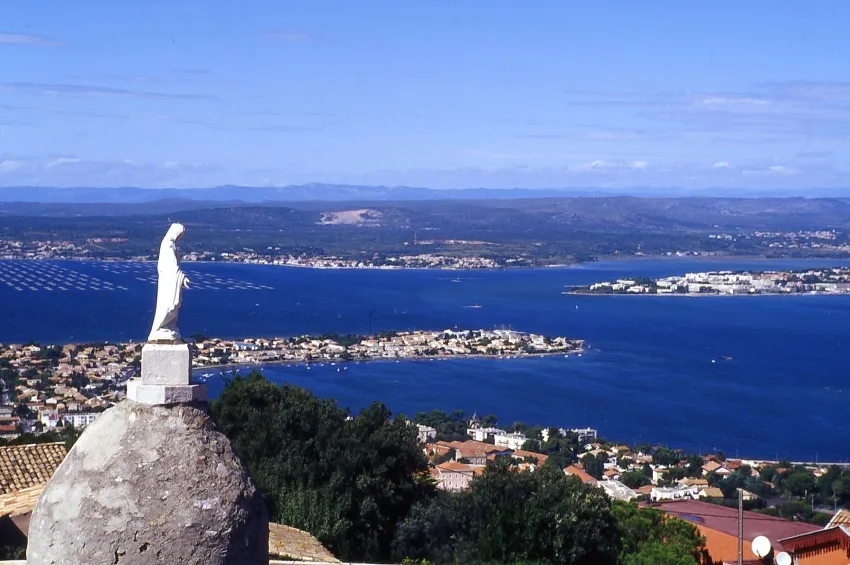
The Etang De Thau is well known for its shellfish. We'll visit the Etang de Thau Museum, where you'll learn about the shellfish farmers and fishermen. Afterwards, you'll enjoy a commented tasting of some of the shellfish while taking in the beauty of the basin from a terrace.
PLEASE NOTE
- Wear comfortable, sturdy walking shoes.
- The order of the visits can change.
- Times are approximate.

Discover a manade and the life of its herders during a wagon tour and take part in a bull sorting. Before returning to the boat, we'll have a delicious snack with products from the farm.
PLEASE NOTE
- Wear comfortable, sturdy walking shoes.
- The order of the visits can change.
- Times are approximate.
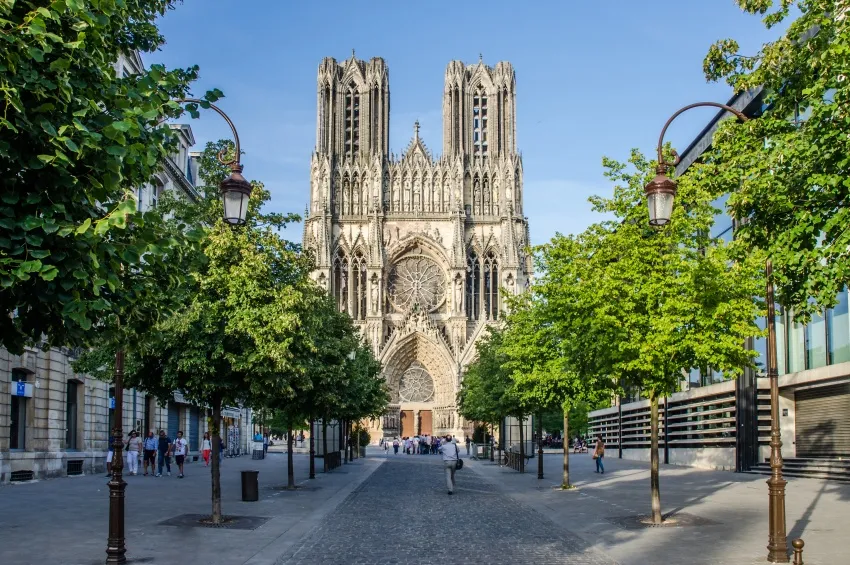
We'll leave by coach from Dormans to Reims, known as the "City of Coronations”. Reims played a prominent role in French monarchical history as the traditional site of the crowning of the Kings of France. Many notable champagne-producing houses have their headquarters in Reims. We'll enjoy a guided tour on foot and discover the Place Royale, Place Du Forum (Roman forum), the Place de l'Hôtel de Ville and more. The cathedral became a UNESCO World Heritage Site, along with the former Abbey of Saint-Remi and the Palace of Tau, in 1991.
We'll take part in a guided visit of the cathedral, which receives about one million visitors annually. Built in the 13th and 14th centuries, this work of art is unique in its unity of style, stained-glass windows of rare magnificence and the "Smiling Angel” statue. At the end of our tour, we'll return on board in Dormans.
PLEASE NOTE
- Good walking shoes are recommended for this excursion.
- The order of the visits can change.
- Times are approximate.
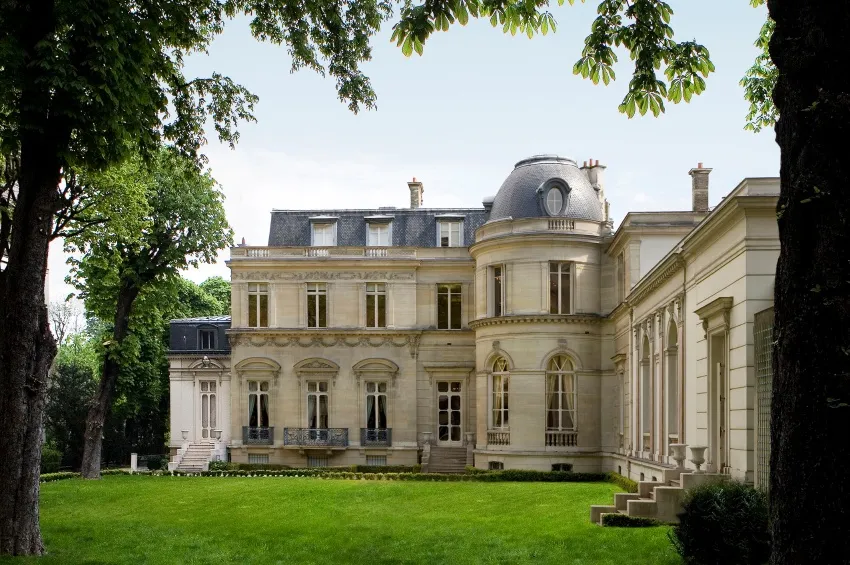
This museum houses the largest collection of paintings by Claude Monet and provides an overview of how his work developed, from the first paintings of his youth to the water lilies, his mature works. (Museum closed on Mondays, in this case, visit of the Parc de l'Orangerie).
PLEASE NOTE
- The order of the visits can change.
- Times are approximate.
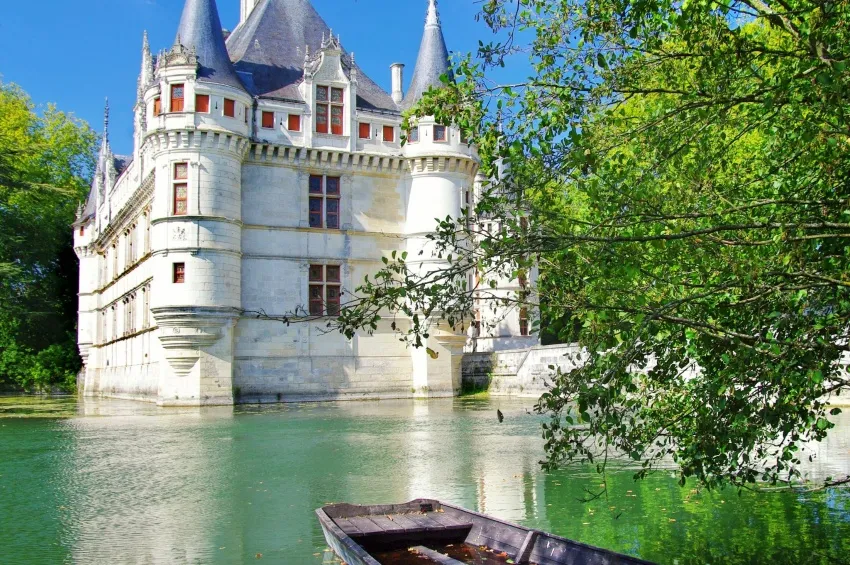
We'll leave by coach for the Château d'Azay-le-Rideau. Built on a small island in the middle of the Indre River, the château as it is today was built under Francis I by Gilles Berthelot, a wealthy financier who wanted to incorporate its medieval past alongside the latest architectural styles of the Italian renaissance. The chateau is a French national monument and possesses all the refinement found in the French Renaissance. We'll continue on to Chinon, where you'll discover an ancient underground quarry that has been transformed into a wine cellar. As we stroll through the impressive tunnels, you'll learn about the secrets of the most renowned Chinon wines. We'll finish with a wine tasting. After lunch, we'll visit the Château de Chinon. Overlooking the town, the castle was the site of key events involving the Hundred Years' War between England and France. We'll return on board for dinner.
PLEASE NOTE
- The order of the visits can change.
- Times are approximate.
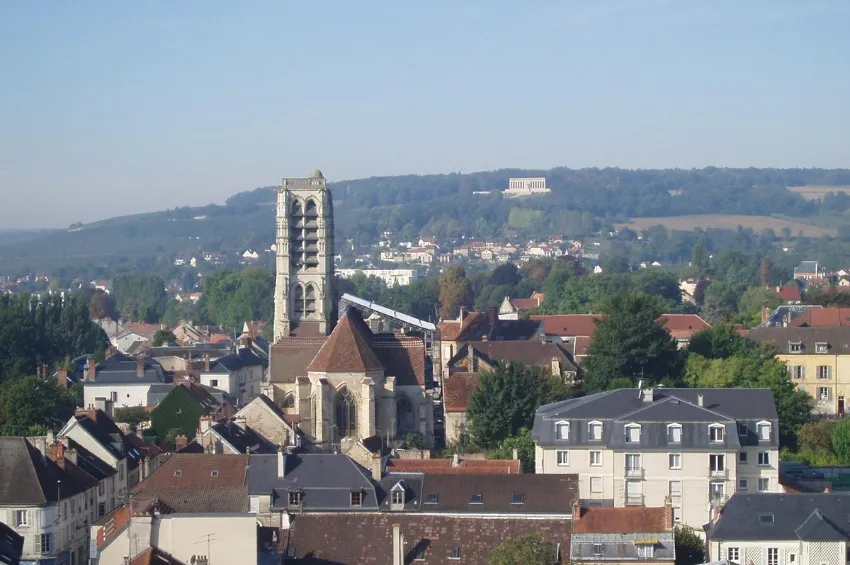
We'll leave on foot to visit the medieval castle in Château-Thierry. In these fortifications which have dominated the Marne Valley for centuries, you'll take part in an educational falconry performance with live demonstrations. You'll get the chance to discover an art that has been classified as Intangible Heritage of Humanity by UNESCO. You'll literally rub elbows with impressive birds. It's the perfect occasion to view these amazing animals up close and discover their prowess. You might even be so lucky as to touch one or two! After our visit, we'll return to the ship.
PLEASE NOTE
- Good walking shoes are recommended for this excursion.
- In case the falconry show cannot take place, the excursion will be replaced by a visit to the Hôtel-Dieu.
- The order of the visits can change.
- Times are approximate.
